- WordPress.org
- Documentation
- Learn WordPress
- Members Newsfeed

18 Mind-Blowing 9th Grade Science Project Ideas
- High School

As a 9th grader, you’re just beginning to explore the fascinating world of science. This is the perfect time to start experimenting with creative, engaging, and educational science projects. Here are 18 mind-blowing ideas for your next 9th grade science project:
1. Build a Crystal Radio: Understand how a simple radio receiver works by constructing your own crystal radio set.
2. Investigate Bacterial Growth: Compare the bacterial growth on different household surfaces (e.g., kitchen countertops, door handles) and analyze which areas require more careful cleaning and sanitation.
3. Earthquake Simulation: Build a shake table to simulate earthquakes and test how various building designs perform under seismic stresses.
4. Food Chemistry: Experiment with chemical reactions in food by exploring how various acids and bases affect the taste and texture of certain ingredients.
5. Solar Oven Design: Learn about solar energy by constructing a solar oven using everyday materials and see how efficiently it can cook food.
6. DNA Extraction from Fruit: Practice extracting DNA from strawberries or other fruits using safe household items like dish soap, salt, and rubbing alcohol.
7. Tornado in a Bottle: Create a model tornado to understand how these powerful weather phenomena form and develop.
8. Homemade Glue: Research natural adhesives found in nature, then develop your DIY glue formula using household materials.
9. Invisible Ink: Study the chemistry behind invisible ink and test different methods for writing secret messages that can only be revealed with the right reactions or substances.
10. Self-Inflating Balloons: Discover the principle behind self-inflating balloons by experimenting with baking soda and vinegar reactions in closed containers like water bottles or balloons.
11. Taste vs. Smell: Observe the relationship between taste perception and olfactory senses with various flavors of jelly beans or other strong-tasting candies while blindfolded or with a friend.
12. Water Filtration: Design and test your water filtration system using household items, like coffee filters or sand, and assess its effectiveness in removing impurities from contaminated water.
13. Homemade Thermometer: Construct a simple thermometer using a clear straw, rubbing alcohol, and a water bottle to observe temperature changes in different conditions.
14. Rocket Launch: Investigate the principles of physics and aerodynamics by constructing DIY rockets using plastic bottles and fuel options like baking soda and vinegar or Alka-Seltzer tablets.
15. Grow Your Own Bacteria: Investigate the different types of bacteria that grow on various surfaces by swabbing them and cultivating colonies on agar plates in petri dishes.
16. Air Pressure Explorations: Discover how air pressure affects various objects like balloons, marshmallows, or vacuum-packed bags through controlled experiments.
17. Battery-Powered Items: Learn about voltaic cells by building simple batteries using lemons or potatoes to power LED lights or small electronic devices like calculators.
18. Illusions of Motion: Study how our brains perceive motion with visual illusion experiments using stroboscopes or simple animations created on a computer or smartphone app.
With these 18 mind-blowing science project ideas for 9th graders, you’re sure to find one that piques your interest and teaches you something new along the way! Happy experimenting!
Related Articles
Literature forms an essential part of a high school education, helping students…

Introduction: Choosing a future career is undoubtedly a daunting task for teenagers.…
Introduction: Teaching high school students can be both challenging and rewarding. To…

Pedagogue is a social media network where educators can learn and grow. It's a safe space where they can share advice, strategies, tools, hacks, resources, etc., and work together to improve their teaching skills and the academic performance of the students in their charge.
If you want to collaborate with educators from around the globe, facilitate remote learning, etc., sign up for a free account today and start making connections.
Pedagogue is Free Now, and Free Forever!
- New? Start Here
- Frequently Asked Questions
- Privacy Policy
- Terms of Service
- Registration
Don't you have an account? Register Now! it's really simple and you can start enjoying all the benefits!
We just sent you an Email. Please Open it up to activate your account.
I allow this website to collect and store submitted data.

25 Incredible 9th Grade Science Project Ideas To Try
Categories Education/School
Forget quizzing your class on all 118 elements of the periodic table. Gather them together for some fun science projects instead!
If you’re teaching grade 9 students, there’s no better way to increase their interest in the wonders of science than by letting them play mad scientist.

Looking to add some spark and energy to your science lessons?
Let your students get creative and experimental with these 25 incredible 9th grade science project ideas to try that are sure to wow and amaze your class!
These incredible grade 9 science projects cover chemistry, physics, biology, and more. For health and safety reasons, just make sure to provide adult supervision where necessary.
1. Pressure Bottle Rocket
Firing this list off is an explosive science project idea that’s as educational as it is heaps of fun. This science project will have your students building their very own pressure rocket from a plastic bottle and a few other basic materials. Just watch out, as you might get wet!
2. Homemade Radio
Turn your students into inventors with this science project that will teach them how to make a homemade radio out of a few household items. They’ll even learn how to make their own headphones using a small magnet, a nail, a tin, and some fine wire.
3. Popping Boba Balls
Science projects can also be tasty! This science project will get your students to turn their favorite drinks into semi-solid boba balls that they can eat like pieces of candy. It’s a fun and effective way to teach your class about spherification and molecular gastronomy.
4. Flying Teabag
Ever seen a flying teabag? Your students probably haven’t either. This flying teabag science project is impressive yet simple, only requiring matches, markers, a non-flammable plate, and as many as many teabags as your students want to see flying!
5. Floating Rice
Teach your students about friction with this fun science project that’s as close as it gets to performing magic. All you need are uncooked grains of rice, a plastic bottle, and a chopstick, pencil, pen, or stick. It’s a simple project, but it’s sure to make their jaws drop!
6. Flaming Torch
Your students will jump at the idea of creating their own fire vortex from rising heat and wind. The main items you’ll need are a turntable, wire mesh bucket, and borosilicate glass beakers. The flames can rise above the bucket, so make sure to do this experiment outside.
7. Glowing Water
Show your students something interesting about tonic water with this glowing water science project idea. You can use tonic water or regular water soaked with the ink from a highlighter pen. Then it’s simply a matter of shining a black light on the water!
8. Rainbow Fire
Here’s a simple science project for teaching your students about chemical reactions . All it involves is a bunsen burner and several chemicals, including boronic acid, strontium chloride, sodium chloride, and potassium chloride, which will turn the flames into different colors.
9. PET Bottle Bridge
This science project idea is perfect as a group activity. It involves building a bridge out of PET plastic bottles using screws and tape. What will amaze your students is how sturdy the finished structure will be (thanks to one amazing science principle), as they’ll be able to walk on it!
10. Infinity Mirror
Optical illusions are always fascinating. And that’s exactly what your students will create with this fun infinity mirror science project. These infinity mirrors will dazzle and impress and also make for a great display item that your students can take home after class.
11. Lemon Volcano
Your students have probably made an erupting playdough volcano using bicarbonate of soda, vinegar, and food coloring – a classic school science project. But what about a lemon volcano? Just a word of caution: this science project can get messy!
12. Stained Glass Candy
Get your students to create their own edible peppermint candy that they take home and share. This science project idea is like a cooking class and a science experiment in one! It will also teach your students about the importance of measuring accurately in chemistry.
13. Vertical Hydroponic Farm
Teach your class about hydroponics and hydroculture with this fun science project that will get them to grow their own vertical farm. This is a large project that also involves building a support frame with microcontrollers that monitor the plants!
14. Rubber Band Racer
Kick-start a drag race competition with this science project idea that will teach your students how to make their own rubber band racers. This science project requires a hot glue gun and an electric drill, so just make sure the students have enough adult supervision.
15. Is Denser Fruit Healthier?
Organize a fun science experiment for your class with this project idea that will get them to test the density of different fruits and vegetables and whether density signifies their nutritional value. Teach them about science and healthy eating in one!
16. Marble Roller Coaster
Transform the classroom into a miniature theme park with this thrilling science project that involves building roller coasters out of foam pipe insulation and masking tape. The students will then measure how much height is needed to make the marbles loop the loops.
17. Teleidoscope
Get the students to create their own DIY kaleidoscopes with this teleidoscope science project. You’ll need to gather a few materials to make the teleidoscopes, but the finished product is something they’ll be peering through for the rest of the day!
18. Electric Play Dough
Teach your students about conductivity with this electric play dough science project idea. It involves piecing together the electrical components as well as creating the playdough itself. Add some creativity by letting your students create their own playdough shapes to electrify.
19. Water Quality
Here’s an environmental science project idea that will also teach your class an important survival skill! Your students will learn about water safety and contamination, as well as how to test the quality of water from any water source and whether it’s safe to drink.
20. Charging Gadgets With Solar Power
Wireless charging? Your students will jump at this science project idea that will teach them how to charge their gadgets with solar power. Several tools are required (including a soldering iron and wire cutters), so just make sure the students are well supervised.
21. Magical Plastic Bag Experiment
Here’s another incredible science project that will have the students believing they’re performing magic. It’s a simple experiment involving pencils and plastic bags filled with water. Will the water spill when punctured? Get your students to find out!
22. Easy Heart Pump Model
Help your class learn more about how the human heart works with this STEM science project idea that will instruct them to build a model heart pump. All you need is a small jar, bendy straws, a balloon, tape or glue, water, and red food coloring.
23. Tiny Dancers
This simple and fun science project idea will teach your class how to make a homopolar motor out of an AA battery and magnet. Your students will also get to create their own “tiny dancers”, which will start to spin once placed on top of the batteries.
24. Heat Sensitive Color Changing Slime
Let your students get messy with this science project idea that will teach them how to create heat sensitive color changing slime. All it requires is white school glue, water, thermochromic pigment, liquid starch, and different food colorings for them to get creative with.
25. Magic Spinning Pen
Have your class discover the power of magnets themselves with this school project idea that involves creating a small structure with a magnetic field. Gluing a ring magnet to a pen and placing it in the middle of the other magnets will cause the pen to spin on its nib!
That wraps up our list of 25 incredible 9th grade science project ideas to try with your class, which will help them discover more about the world of science through their own creativity and experimentation.
The above science project ideas are perfect for students aged 14 to 15 and are guaranteed to fascinate them no matter whether science is their favorite subject or not. Try these as soon as possible to add some excitement to your science lessons!
Further reading: How to homeschool a 9th grader.
- Recent Posts
- Homeschooling In High School: Pros And Cons - February 24, 2024
- How Do I Withdraw My Child From School To Homeschool? - February 23, 2024
- How To Not Go Crazy Homeschooling Kids: A Guide For Frazzled Parents - February 22, 2024
Related Posts:

Leave a comment Cancel reply
Your email address will not be published. Required fields are marked *
Save my name, email, and website in this browser for the next time I comment.
The Edvocate
- Lynch Educational Consulting
- Dr. Lynch’s Personal Website
- Write For Us
- The Tech Edvocate Product Guide
- The Edvocate Podcast
- Terms and Conditions
- Privacy Policy
- Assistive Technology
- Best PreK-12 Schools in America
- Child Development
- Classroom Management
- Early Childhood
- EdTech & Innovation
- Education Leadership
- First Year Teachers
- Gifted and Talented Education
- Special Education
- Parental Involvement
- Policy & Reform
- Best Colleges and Universities
- Best College and University Programs
- HBCU’s
- Higher Education EdTech
- Higher Education
- International Education
- The Awards Process
- Finalists and Winners of The 2023 Tech Edvocate Awards
- Award Seals
- GPA Calculator for College
- GPA Calculator for High School
- Cumulative GPA Calculator
- Grade Calculator
- Weighted Grade Calculator
- Final Grade Calculator
- The Tech Edvocate
- AI Powered Personal Tutor
ISAT Scores Can Now Be Used for Idaho College Admission
Marquis who’s who honors naterena a. parham-cofield, phd, m.ed., msw, mba for expertise in higher education administration and human resources liaison, brevard college reports record number of enrolled students, solomon ofori-acquah selected to lead the georgia solve sickle cell initiative, 20 teacher-tested ways to establish classroom rules and set high standards, attorneys, consultants seek $13.4m in fees from mercy iowa city bankruptcy, spice up your digital experience, heavy policing associated to high rates of suicide in black lgbq community, ashley tanksley, electude, the leader in automotive and truck e-learning, announces the release of heavy vehicle classroom, 23 of the best 9th grade science projects and experiments.

Are you looking for science activities to do with your 2nd graders? No sweat. We have you covered. Check out our list of 23 science projects and experiments that you can try with your 9th graders this month.
- Is a Dense Fruit a Healthy Fruit? | Education.com – Grades 9-12, In this experiment, students will find out if there is a correlation between density and nutritional value, by measuring the density of vegetables and fruits.
- Effect of Glucose and Sucrose as Dietary Additives | Education.com – Grades 9-12, Students examine if and how glucose affects the lifespan of humans.
- Effect of Acid Rain on Seedling Germination | Education.com – Grades 9-12, Does acid rain have a positive or negative impact on seedling germination? In this project, students use vinegar-based solutions to mimic acid rain conditions to find.
- Effectiveness of Garlic in Fighting Bacteria | All-Science-Fair-Projects.com – Grades 9-12, Use milk in petri dishes to find out if garlic is a natural antibiotic.
- How Do Roots Grow When the Direction of Gravity Changes? | ScienceBuddies.org -Grades 6-10, Plants respond to gravity by stems that grow upward and roots that grow downward. Experiment with germinating seeds and rotate them to make up down and down up. How do you think the growing seedlings will respond?
- Build a Raft Powered by Surface Tension | Sciencebuddies.org – Grades 6-10, Learn about the properties of surface water tension, and use it to propel a raft.
- Paw Preference in Pets | Sciencebuddies.org – Grades 7-10, Are animals left-handed or right-handed like humans?
- Bat Detector: Listen to the Secret Sounds of Bats | Sciencebuddies.org – Grades 7-10, Study the behavior of bats to find out how do they use echolocation to catch their prey
- Saving Migratory Animals | ScienceBuddies.org – Grades 7-10, They’re here today but could be gone tomorrow. Examine the migratory path of a bird species and the similarities and differences between their winter and summer habitats. Recommend which locations should be preserved to protect these species.
- Electric wind: hi-speed threads of charged air | Scienceclub.org – Grades 9-12, Use dry ice and an electrostatic generator to observe air streams and hi-speed air-threads.
- Evaluating Benfords Law | Education.com – Grades 9-12, In this project, students investigate the applicability of Benford’s Law to many sets of everyday data, such as lists of country populations, utility bills or the distance of various stars from earth.
- Patterns in J.S. Bach | Education.com – Grades 9-12, Determine the mathematical patterns in JS Bach’s two-movement preludes and fugues.
- Raw vs. Cooked Foods | Education.com – Grades 9-12, Do raw foods contain more calories than cooked foods? Use a bomb calorimeter to measure and calculate the amount of energy (calories) within various foods, ignite food samples, calculate the change in temperature.
- Chemistry of Ice-Cream Making | Sciencebuddies.org – Grades 9-12, Test how the addition of salt and other substances to water affects the freezing point of the water-based solution. Is rock salt and ice the best combination for freezing ice cream?
- Water to Fuel to Water | ScienceBuddies.org Grades 9-12, Examine the possibilities for water as part of the fuel cycle for the future. How efficient is a cobalt-based catalyst at helping to form molecular oxygen?
- Levitating with Eddy Currents! | Sciencebuddies.org – Grades 9-12, Build your own maglev (magnetic levitation) system and demonstrate how eddy currents work.
- Does Your Cell Phone Leak? | Sciencebuddies.org – Grades 9-12, Measure cell phone radiation from several distances when making a call and when texting.
- Lighthouse Redesign | Education.com – Grades 9-12, Old lighthouses have historical significance. Give them a new life with a modern interior redesign.
- Lights and Sounds of Logic | Illinois Institute of Technology – Grades 9-12, Digital electronics such as smartphones and computers work by embedded logic. Use circuits that light up and make a sound to show how this basic logic works.
- Oregametry | Education.com – Grades 9-12, Use the mathematics of paper folding to learn the practical applications of particular origami folding techniques. Create your own origami or make modifications to existing designs. Origami Sightings has some mind-blowing applications of origami concepts.
- Extracting Heat Energy from a Compost Pile | Sciencebuddies.org – Grades 9-12, Use your bananas peels, newspapers, leaves, and coffee grounds to create compost. Find out if enough energy is generated from the compost to heat water.
- Do Hurricanes Cool the Ocean? | Sciencebuddies.org – Grades 9-12, Collect data on hurricane strength and sea surface temperature to determine if cooling occurs and if it can be measured with the passing of a hurricane.
- How Earth’s Wobble Affects the Rotation of Earth | Education.com – Grades 9-12, The purpose of this project is to determine if there are fluctuations in the rising and the setting of the sun and the position of the earth as it rotates. You’ll record observations over three months.
12 Grant Opportunities for Teachers and Schools
6 steps to becoming a teacher in ....
Matthew Lynch
Related articles more from author.

How I Teach: A science teacher’s Method for pushing past ‘I don’t get it’

Four “Not to Miss” Education Conferences for EdTech Leaders

PreK Science Apps, Tools, and Resources That We Love
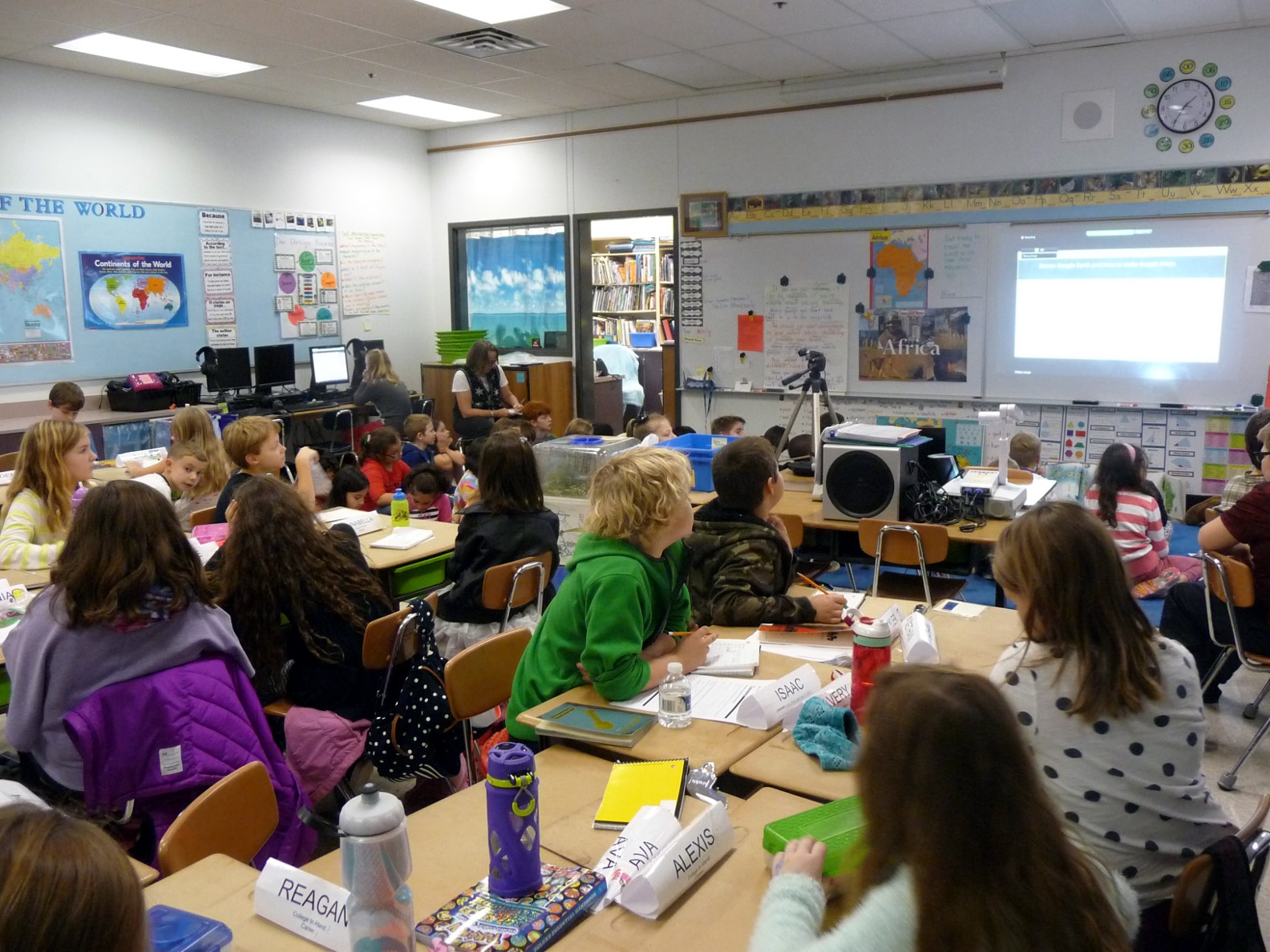
Difference Between Independent and Dependent Variables

12 STEM Resources for Teachers
The edvocate podcast, episode 5: the archetype of a great teacher.
- Skip to primary navigation
- Skip to secondary navigation
- Skip to main content
- Skip to primary sidebar
An Everyday Story
Baby Gifts, Kids Toys & Motherhood
- Terms of Services
- Privacy Policy
25 Interesting 9th-Grade Science Project Ideas
By Beth Roberts | Last Updated May 4, 2022
The only thing stopping you from thinking of a worthy project for 9th-grade science class is your lack of inspiration. Trust us; we’ve got plenty of ideas to get you started. We have learned that at this level through trial and error. Ready to have some fun and get your hands dirty? Here are 25 of the most interesting 9th-grade science project ideas.

1. Floating Rice
The floating Rice project is a classic and interesting one at that. It’s simple, it’s fun, it’s cheap, and most importantly – it works. This is suitable for 9th-grade rooms if your students are still interested in scientific experiments after being exposed to formulae and equations.
2. Hydroponic Garden
Hydroponic Garden is another exciting option to explore . You can get an aquarium and use it to grow plants, or use an enormous container, such as the ones you can buy from a hardware store, mix the soil yourself or simply buy soil from somewhere else. You will have to have a water source for the container that is kept moist throughout the day.
3. Crystal Powered Radio
Crystal Powered Radio is a classic and exciting project for 9th-grade science students. It is fun to do, cheap, and it can be in a space as small as a classroom. You will need some crystals or stones and an AM transmitter that you can build on your own.
4. Plastic Bottle Bridge
If you are on the quest for interesting 9th-grade science project ideas , you need to let your students explore this fun and interesting little project. It is cheap, easy to do, it can be indoors and outdoors, and most importantly – your students will learn a lot from this.
5. Apple Wrecking Ball
Apple Wrecking Ball is another cheap and fun project. It is simple, requires very few resources, and can be indoors and outdoors. Your students will need nothing other than a few apples, some ping pong balls, and a string. It may not appear to be a particularly engaging project at first glance, but it investigates a variety of fascinating topics, including pressure, to mention just one.
6. The Chemistry Of Colorful Fire
The Chemistry of Colorful Fire is a project for 9th-grade science students interested in chemistry and physics. It is simple, requires very few resources, and can be indoors and outdoors.
7. Optical Illusions In Color And Black & White
Optical Illusions in Color and Black & White is an exciting project to explore for 9th-grade students. The project is pretty simple, and indoors or outdoors. In addition to its educational value, your students will have a blast while trying it out on their friends, even if they are unsure what they are doing.
8. Rubber Band Car
Rubber Band Car is another exciting project for 9th-grade science students. You need nothing more than some rubber bands, some toothpicks, and a few other things to make it work. The idea is simple, and the assembly process is straightforward. Your students will enjoy doing something like this without knowing that they are learning something simultaneously.
9. Earthquake Science
This is an excellent project for 9th-grade science students , mainly if they are interested in geology. It is cheap and fun, and it is safe to conduct outdoors. However, keep in mind that your students will have to know how to read the signs and take some time to play around with their creation before trying it out on an unsuspecting person.
10. Forensic Fingerprints
If you have a 9th-grade science class interested in criminal investigation and forensics, then the Forensic Fingerprints project is what you need. It is suitable for the more advanced students in this group, and it can be both indoors and outdoors.
11. Effects Of Antibiotics On Bacteria
Effects of Antibiotics on Bacteria is a fun and interesting 9th-grade science project idea. Students will be able to observe the effects of antibiotics on bacteria by growing the bacteria in an environment with and without the drug.
12. Glowing Water
Glowing water is an easy and fun experiment that you can do at home. You can use this as a science fair project for 9th-grade science class or just have your kids learn about glowing water as an interesting 9th-grade science project idea.
13. Candy Lab
Candy Labeling is a fun and interesting 9th-grade science project idea. You can have your students label the types of candy in a jar that resembles a rainbow. This will also help them to become more confident with marking things.
14. Rain Or Snow: Which Is More Acidic?
Rain or Snow: Which is more Acidic? This is an interesting 9th-grade science project idea. You can have your students compare the amount of acid produced by rain vs. snow on apples. This will let them know the differences and similarities between rain and snow.
15. Is A Dense Fruit A Healthy Fruit?
Is a Dense Fruit a Healthy Fruit? is an interesting 9th-grade science project idea to let students know about fruits’ density and nutritional value. Students will be able to check the thickness of different fruits and correlate it with their nutritional value and their density. This will help them to determine the health benefits of these fruits.
16. Effect Of Acid Rain On Seedling Germination
Effect of Acid Rain on Seedling Germination is a fun and interesting 9th-grade science project idea. You can have your students test different species of seedlings in an environment with and without acid rain. This will let them know the effects of acid rain on seedlings used for farming.
17. How Do Roots Grow When The Direction Of Gravity Changes?
How Do Roots Grow When the Direction of Gravity Changes? This is an interesting 9th-grade science project idea. Students will be able to observe how roots grow when gravity changes. They will keep a seedling in an environment with and without altered gravity. This will show them how hearts react in different kinds of environments.
18. Electromagnetism
Electromagnetism is an interesting 9th-grade science project idea. It can be a fun and exciting experiment for your students to observe the effects of electromagnetism on a coiled plastic wire. This will let them know the results of electromagnetism on us daily.
19. Rubber Band Racer
Rubber Band Racer is an interesting 9th-grade science project idea that lets the students know about the relationship between the mass, speed, and tension of a rubber band. This will help them to understand how their cars work. They will create a roller coaster with rubber bands instead of rails.
20. Flaming Torch
Flaming Torch is an exciting 9th-grade science project idea that lets the students know about the relationship between pressure, temperature, and volume of gas. They will be able to create a flaming torch with a bicycle pump attached to a balloon. They can perform some other experiments with this flaming Torch as well.
21. Flying Tea Bag
Flying Tea Bag is a fun experiment enjoyed by kids and adults alike. This simple experiment will enthrall your audience and make them wonder how a teabag can fly. All you need are some tea bags and some rubber bands. You want to stretch the rubber band over the teabag, preferably around the middle portion of the pack. Then, you want to let it go by pulling off the rubber band in a quick motion.
22. Pressure Bottle Rocket
This is a simple rocket experiment . You need to take a two-liter plastic soda bottle, something to hold the end, and fill it with water or air. Make sure you don’t accidentally throw it into the fire and have a huge mess. Take a strip of aluminum foil and wrap it around the bottle cap to ensure it doesn’t fly off when you light the bottle.
23. Origami Sightings
Origami is an art that anyone can do . And with this experiment, you can show your audience that paper can fly. All you need are some sheets of paper and scissors to do this. You can also use a larger sheet of paper if you’d like. Fold the sheet along the natural crease to form wings. Then take the report and fasten it onto a wall or ceiling using glue, tape, or nails and strings.
24. Chemistry Of Ice-Cream Making
Chemistry of Ice-Cream Making is a fun experiment that you can do using ice cream or yogurt. It’s an easy experiment, and your class can enjoy watching it get warmer as the chemical reaction occurs. You need some sugar, food coloring, and water with a spoon. Put the sugar in the scoop and add food coloring gradually. Keep stirring until the color throughout the mixture. Then add water bit by bit until you have a spoonful of liquid.
25. Levitating With Eddy Currents
Eddy currents are conductive materials used in many applications such as motors, speakers, satellites, or microwave ovens. They are also used to detect changes in the density of liquids. In this experiment, you will use eddy currents to levitate objects using water and paint. You will need a bowl of water and some paint for the project.

30 Best Science Experiments & Projects for High School
Welcome to our round-up of top science fair projects and science experiments tailored specifically for curious high school students.
Science fair is not just about the glitz and glamour of a first-place trophy; it’s about the passion, the inquiry, and the insatiable curiosity that drive every scientist, young and old. Hopefully, our curated list of the best hands-on science fair projects for high school students will ignite that curiosity in you.
Each project on this list offers a unique opportunity to dive deep into scientific inquiry and present findings with both clarity and flair.
Let’s dive in and make learning an unforgettable adventure!
1. Burn Calories
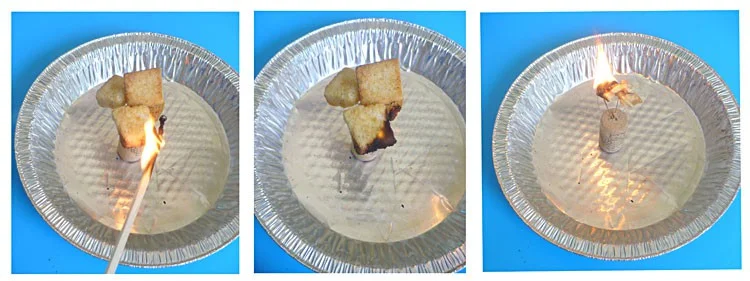
Don’t miss this opportunity to unravel the mysteries of energy transformation and uncover the scientific secrets hidden in the simplest of substances!
Learn more: Science Buddies
2. Extracting DNA from Strawberry
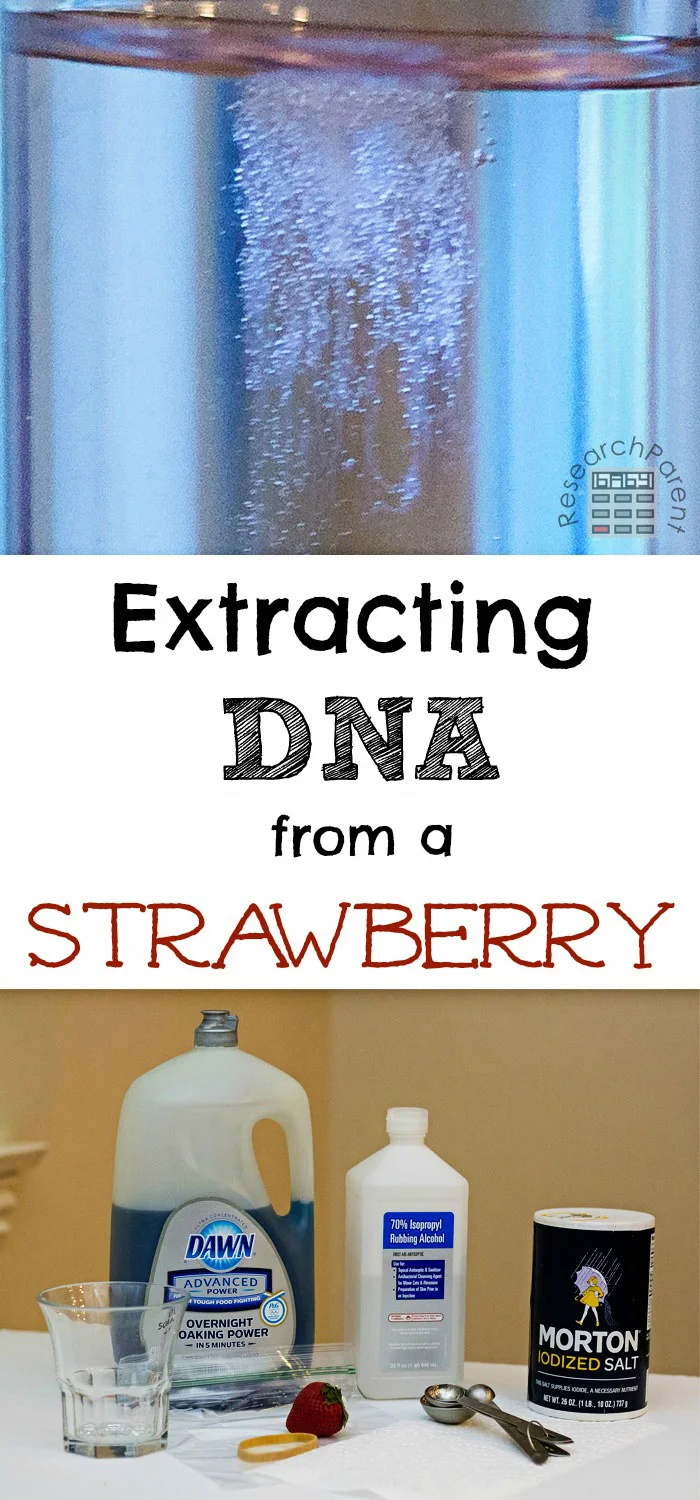
By following a series of simple yet insightful steps, students will witness the magical moment of DNA extraction, fostering a deeper appreciation for the fundamental building blocks of life.
Learn more: Extracting DNA from Strawberry
3. Build a Simple DIY Newton’s Cradle
As students assemble the materials and witness the rhythmic dance of swinging spheres, they will witness the scientific principles they’ve learned in the classroom come to life before their eyes.
4. Make a Monster Dry Ice Bubbles
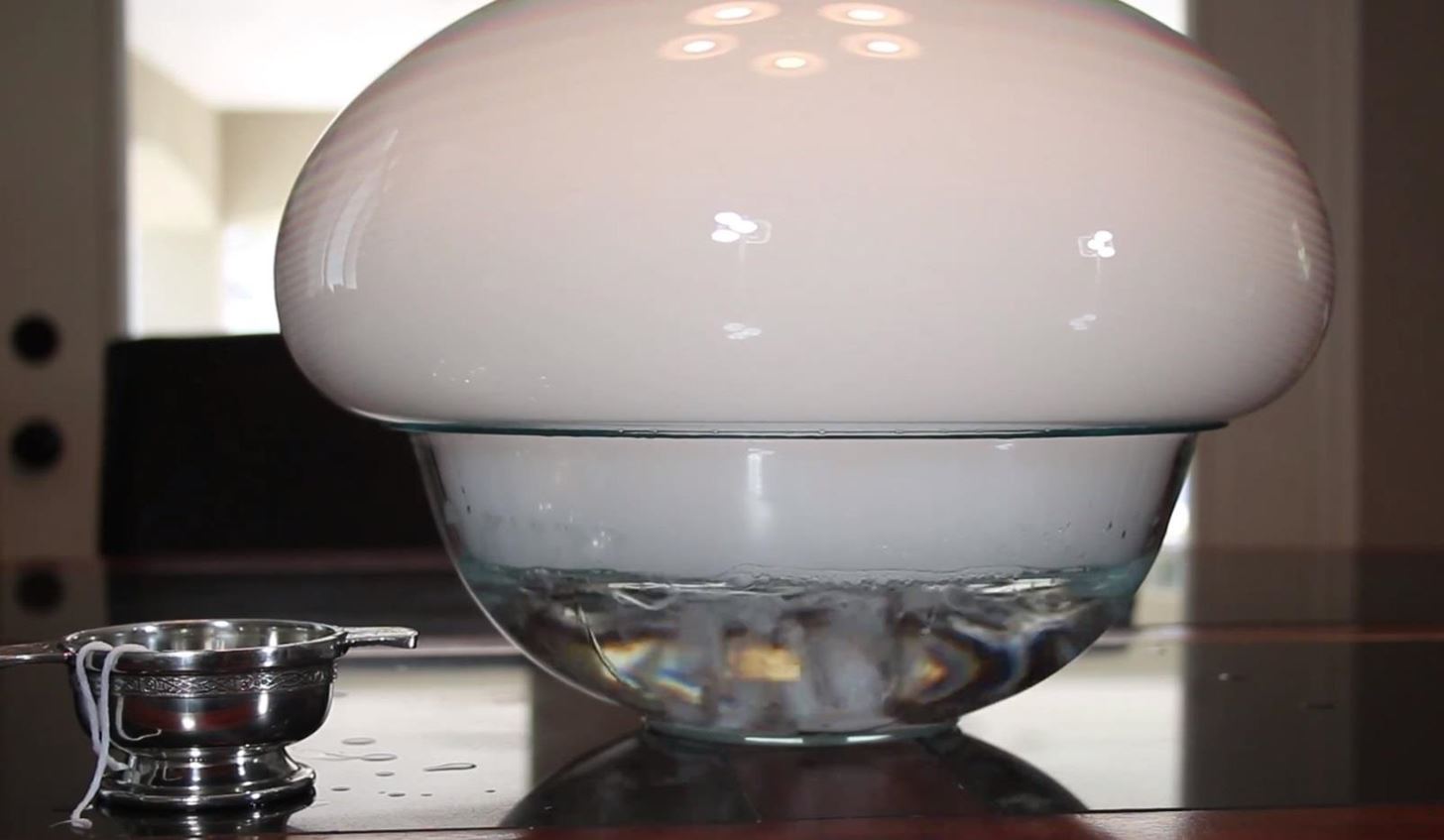
Unleash your inner mad scientist and learn how to make Monster Dry Ice Bubbles with this high school science experiment!
Get ready to be captivated as you create giant, spooky bubbles that dance and swirl with the mysterious power of dry ice.
Learn more: Wonder How To
5. Soil Erosion Experiment
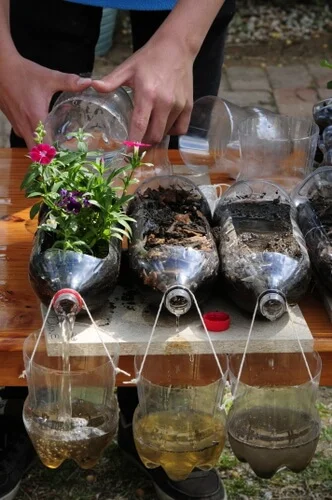
As stewards of our environment, it’s crucial to comprehend the impact of natural processes like soil erosion.
Through this experiment, students will gain a deeper appreciation for the significance of soil conservation and sustainable land management practices.
Learn more: Life is a Garden
6. Candle Carousel
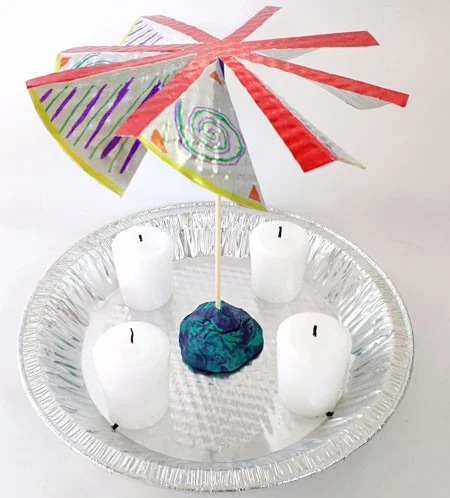
This experiment combines the wonders of physics with the art of crafting, making it an enriching experience that ignites curiosity and fosters a deeper appreciation for the elegant dance of energy in our world.
7. Find Out if Water Conducts Electricity
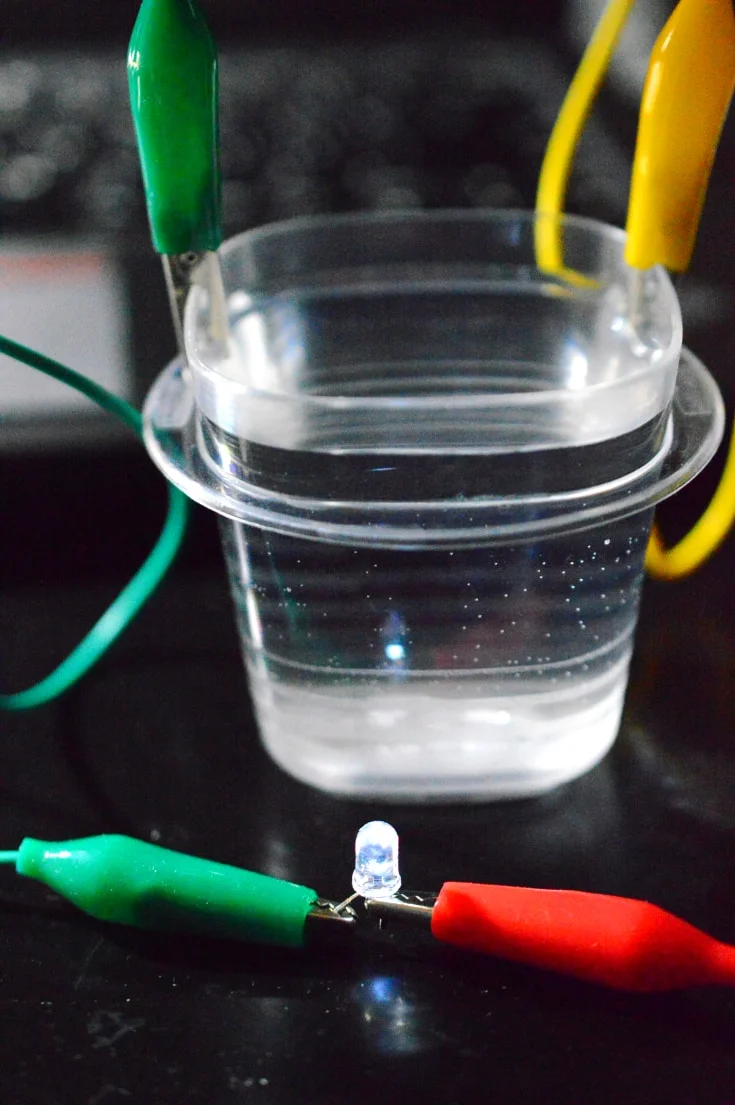
In this captivating activity, students will explore the conductive properties of water and unlock the secrets of how electrical currents flow through different substances.
Learn more: Rookie Parenting
8. Roller Coaster Stem Experiment
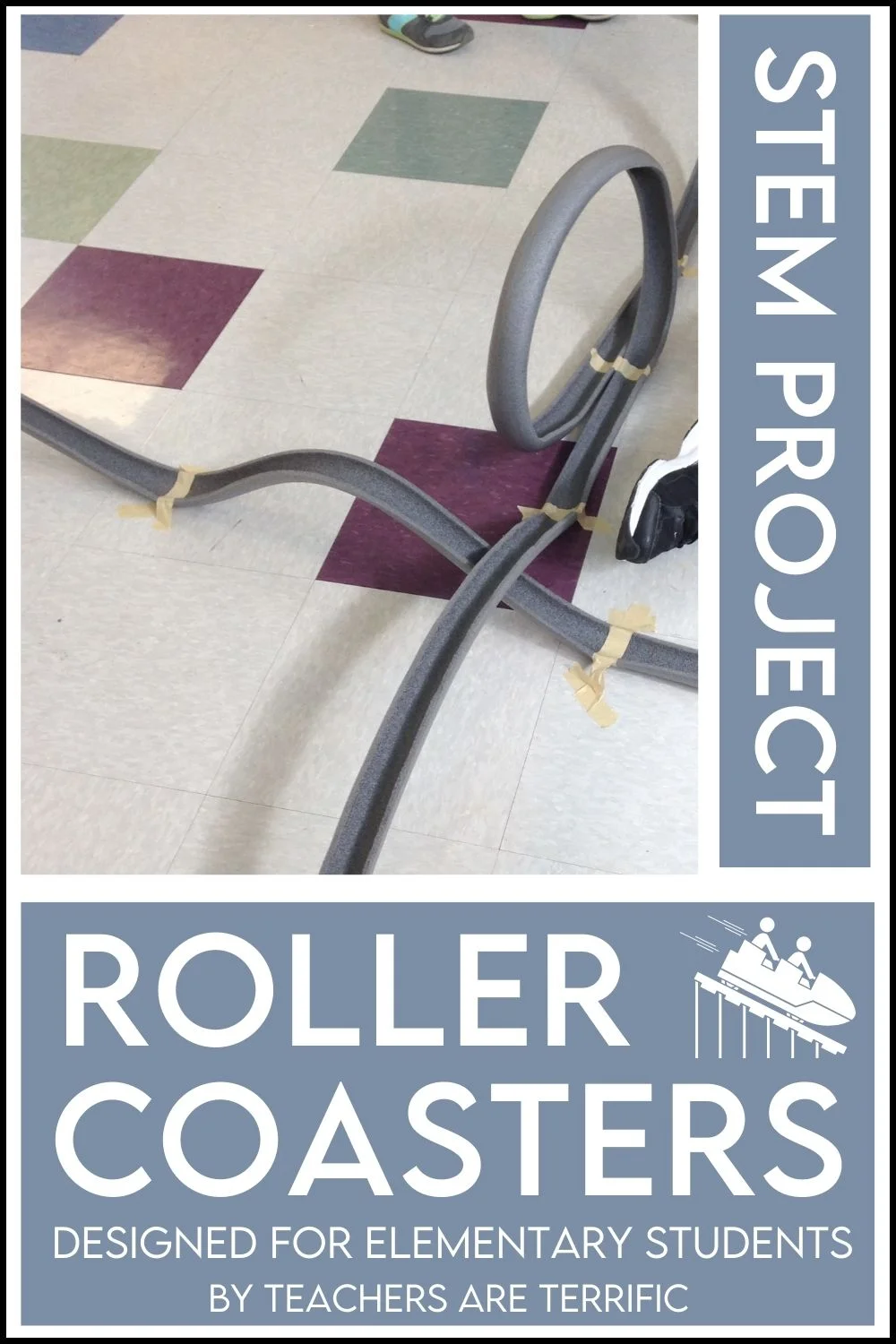
By experimenting with various designs and track configurations, students will refine their problem-solving skills and gain valuable insights into the practical applications of physics and engineering.
Learn more: STEM Project
9. Lemon Battery
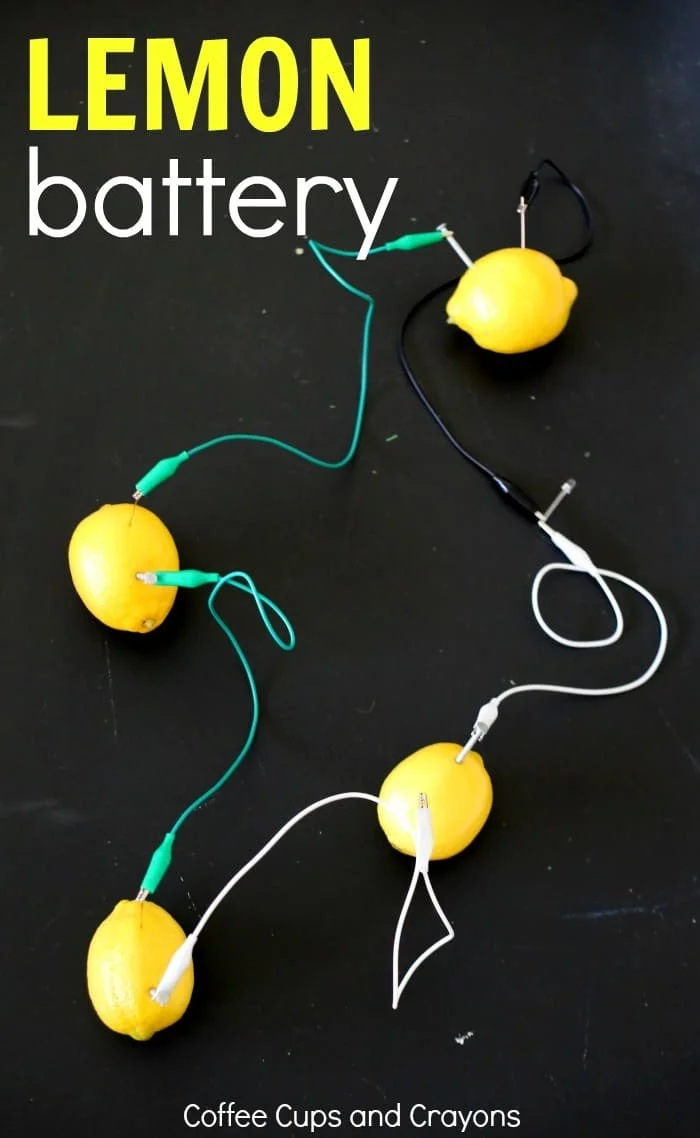
Engaging in this experiment not only teaches the basics of electrical circuits but also sparks curiosity about the natural world and the science behind it.
Learn more: Coffee Cups and Crayons
10. Watering Plants Using Different Liquids
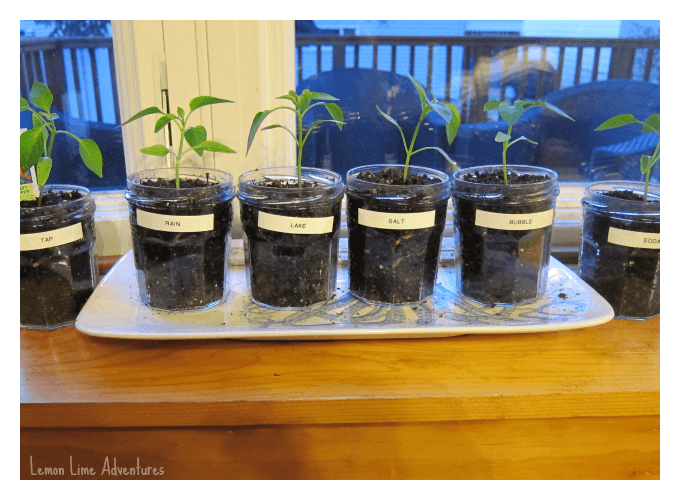
Discover the wonders of plant hydration with the intriguing high school science experiment – “Watering Plants Using Different Liquids.” In this captivating project, students explore how various liquids impact plant growth and health.
Learn more: Lemon Lime Adventures
11. Measure Electrolytes Found in Sports Drinks
By conducting a series of tests and analyses, students will quantify the electrolyte content present in various sports drinks.
12. Relight the Flame Without Directly Touching It
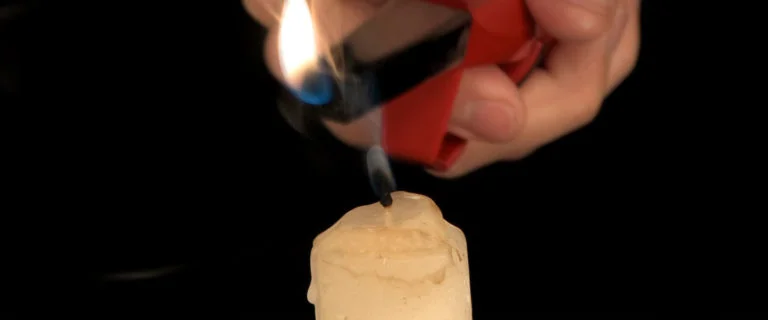
This captivating project challenges students to learn about the intriguing properties of heat transfer and combustion.
By exploring different methods to reignite a candle flame without physical contact, students will uncover the secrets of heat conduction, convection, and radiation.
Learn more: Stevespangler
13. Conduct Fingerprint Analysis
This captivating project immerses students in the intriguing world of crime scene investigations, where they will uncover the uniqueness of fingerprints and their role in forensic science.
14. Separate Water Into Hydrogen And Oxygen Using Electrolysis
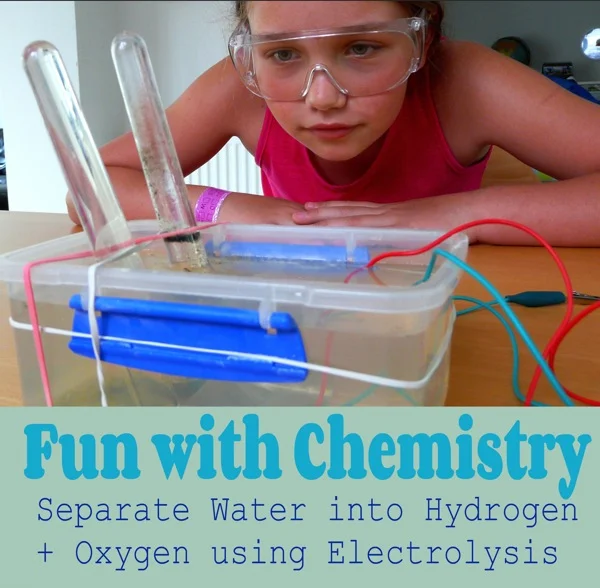
This electrifying project allows students to explore electrolysis and the decomposition of water into its elemental components.
Learn more: Navigating by Joy
15. Simple Color Detection Circuit
This experiment not only introduces fundamental concepts in electronics and circuitry but also opens up endless possibilities for real-life applications, from automated sorting systems to color-sensitive devices.
16. Carbon Sugar Snake
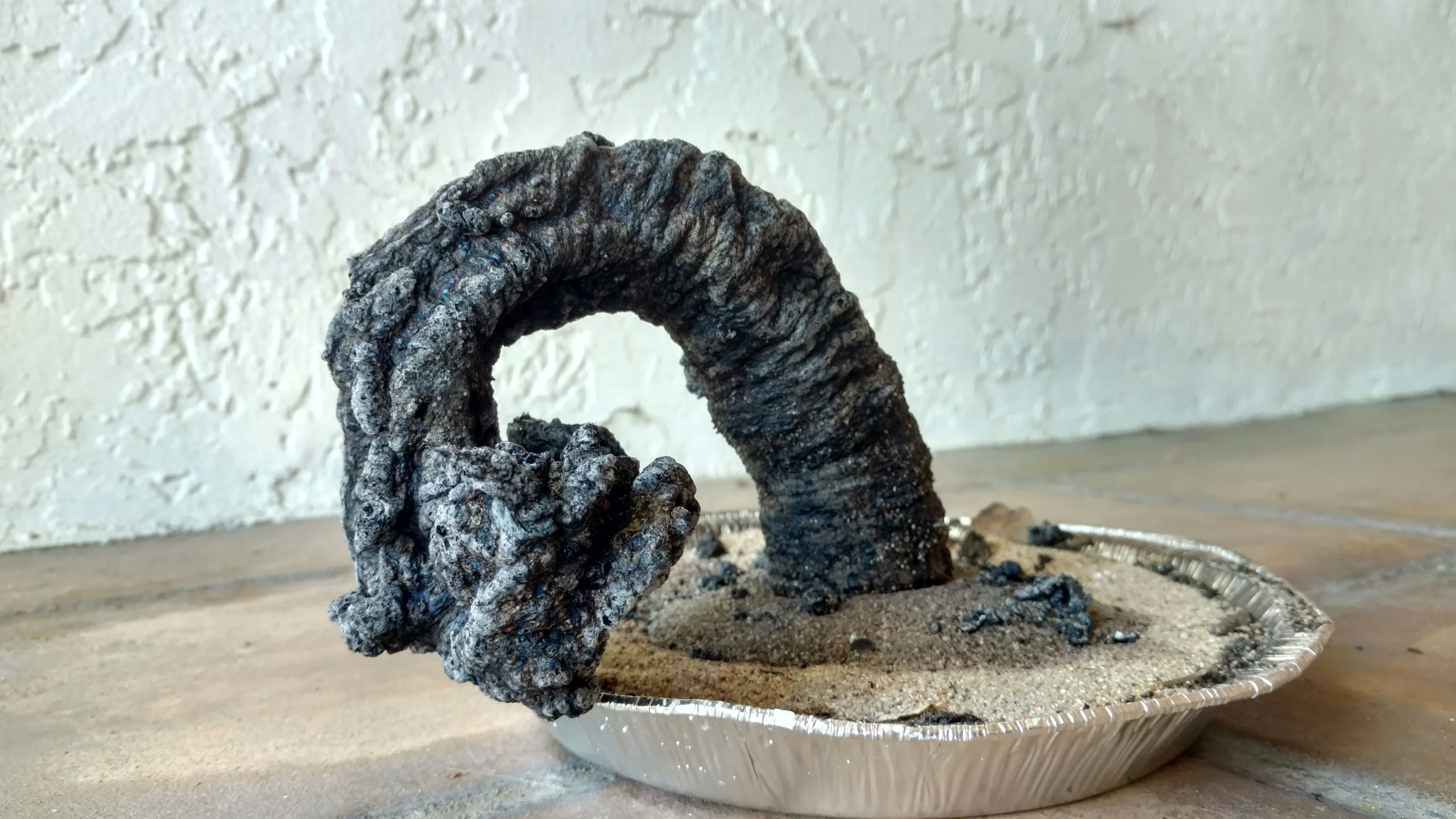
This enchanting project allows students to witness a dazzling display of science as they combine common household ingredients to create a dark, coiling “snake” made of carbon.
Learn more: Kiwi Co
17. Build a Hydraulic Elevator
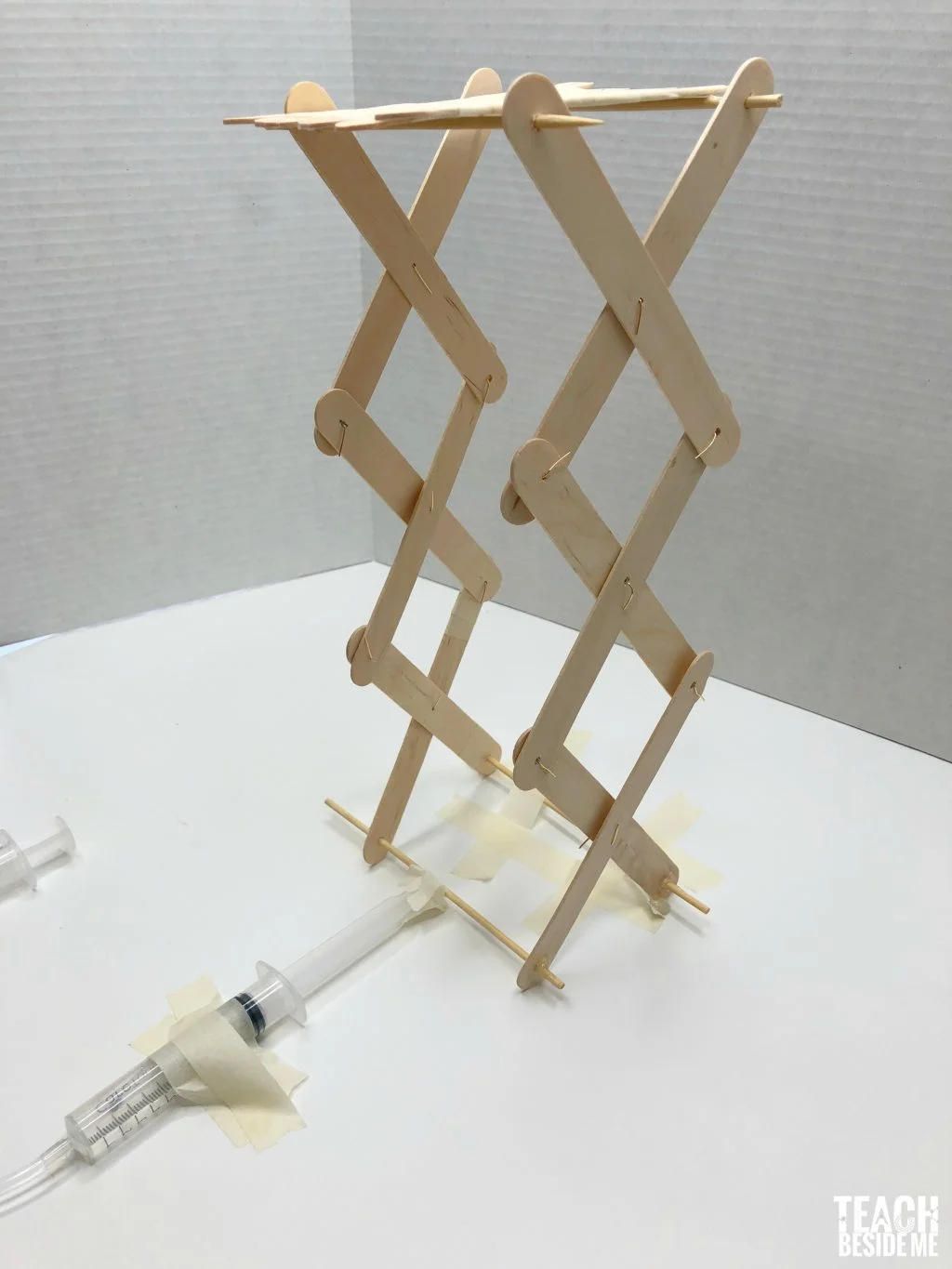
This captivating project invites students to learn about engineering and fluid mechanics. By constructing a working model of a hydraulic elevator, students will explore the principles of Pascal’s law and the fascinating concept of fluid pressure.
Learn more: Teach Beside Me
18. Brew up Some Root Beer
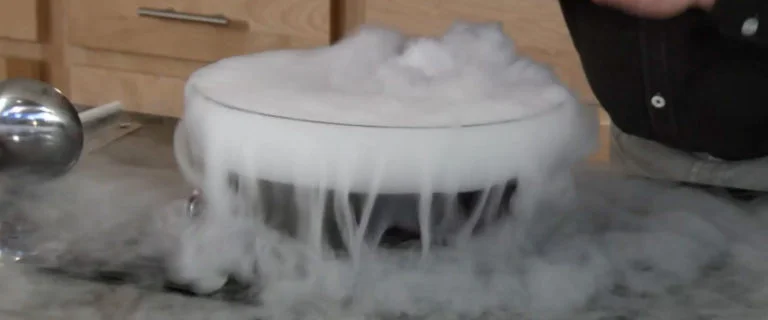
This enticing project invites students to explore the fascinating world of chemistry and fermentation while creating their own delicious and bubbly concoction.
Learn more: Home School Creations
19. Extracting Bismuth From Pepto-Bismol Tablets
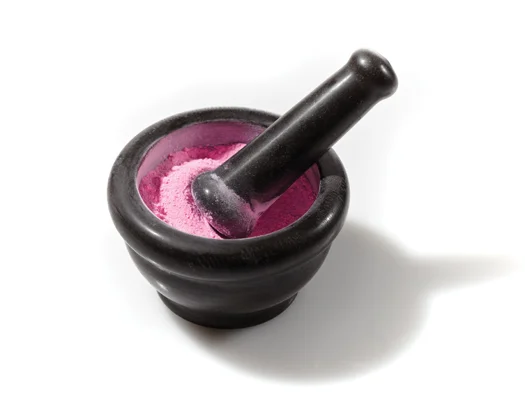
This hands-on experiment not only sheds light on the principles of chemistry and lab techniques but also highlights the real-world applications of bismuth in medicine and various industries.
Learn more: Popscie
20. Solar-Powered Water Desalination
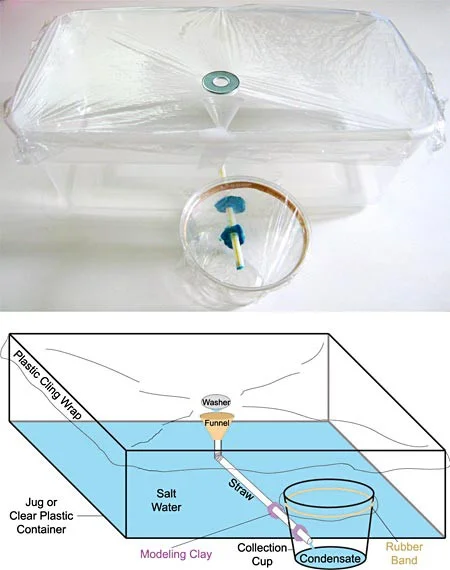
By designing and building a solar-powered water desalination system, students will learn how to harness the sun’s energy to purify saltwater and make it safe for consumption.
21. Applying Hooke’s Law: Make Your Own Spring Scale
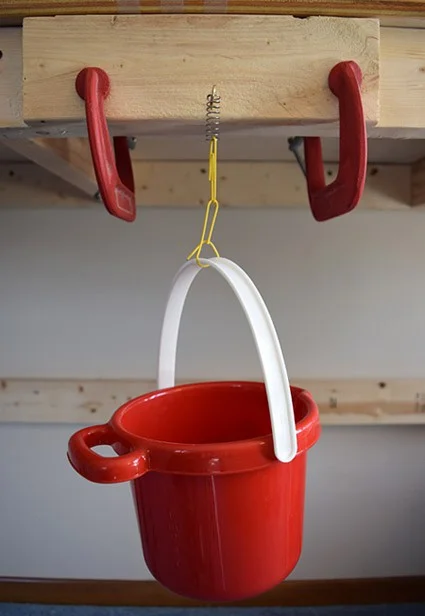
By designing and constructing their very own spring scale, students will uncover the principles of Hooke’s Law and the relationship between force and displacement in a spring system.
22. Homemade Hand Warmer
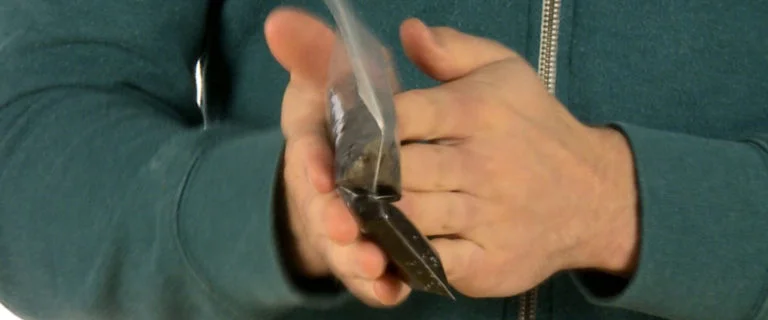
By creating their own hand warmers using safe and easily accessible materials, students will witness the magic of heat generation through chemical processes.
Learn more: Steve Spangler
23. Explore the Concept of Symbiosis Involving Nitrogen-Fixing Bacteria.
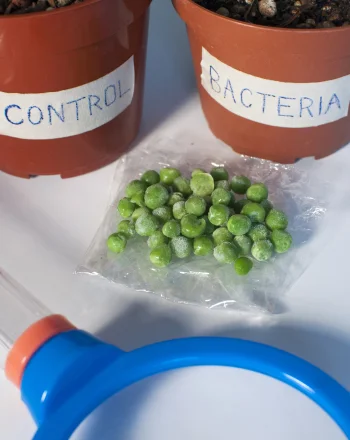
By investigating how certain plants form a mutually beneficial bond with these bacteria, students will gain insights into the essential role of nitrogen fixation in the ecosystem.
Learn more: Education.com
24. Center of Gravity Experiment
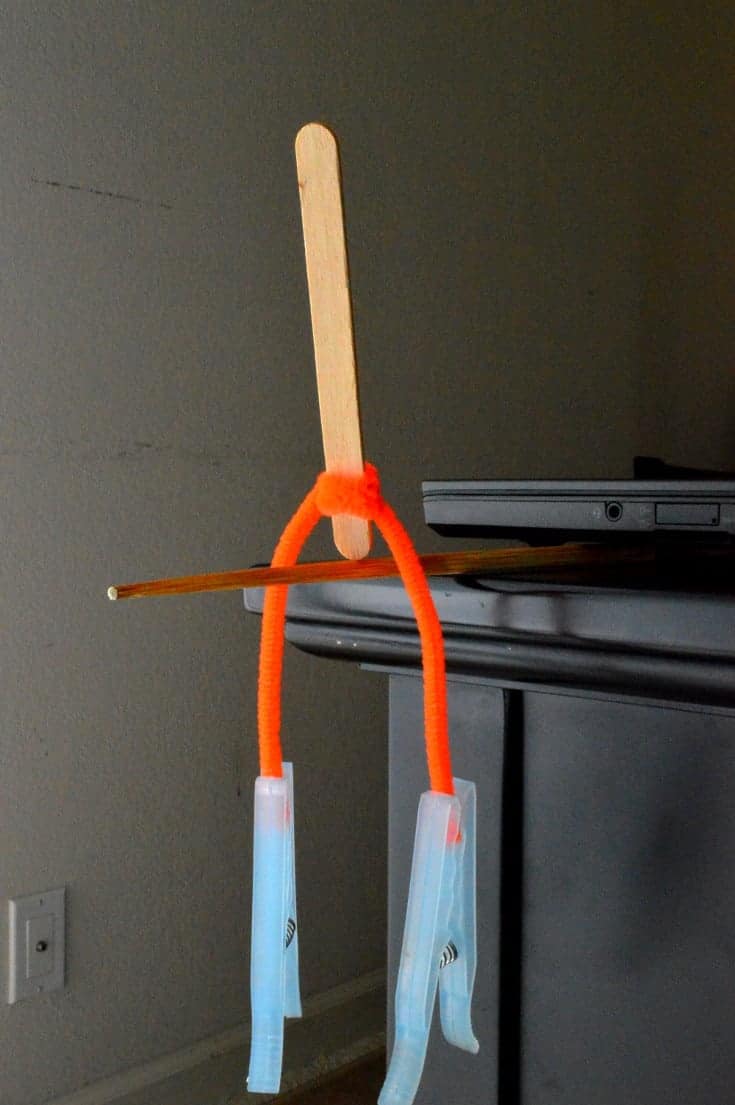
This fascinating project invites students to explore the concept of the center of gravity and its role in determining stability.
25. Power up Homemade Batteries
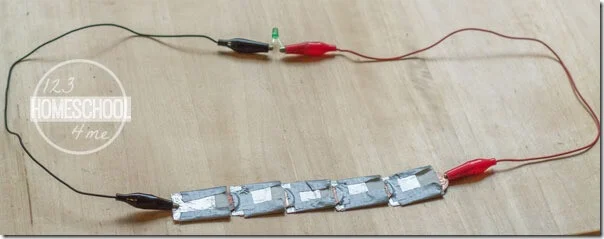
This captivating project invites students to learn about electrochemistry and energy generation.
Learn more: 123 Homeschool
26. Film Canister Explosions
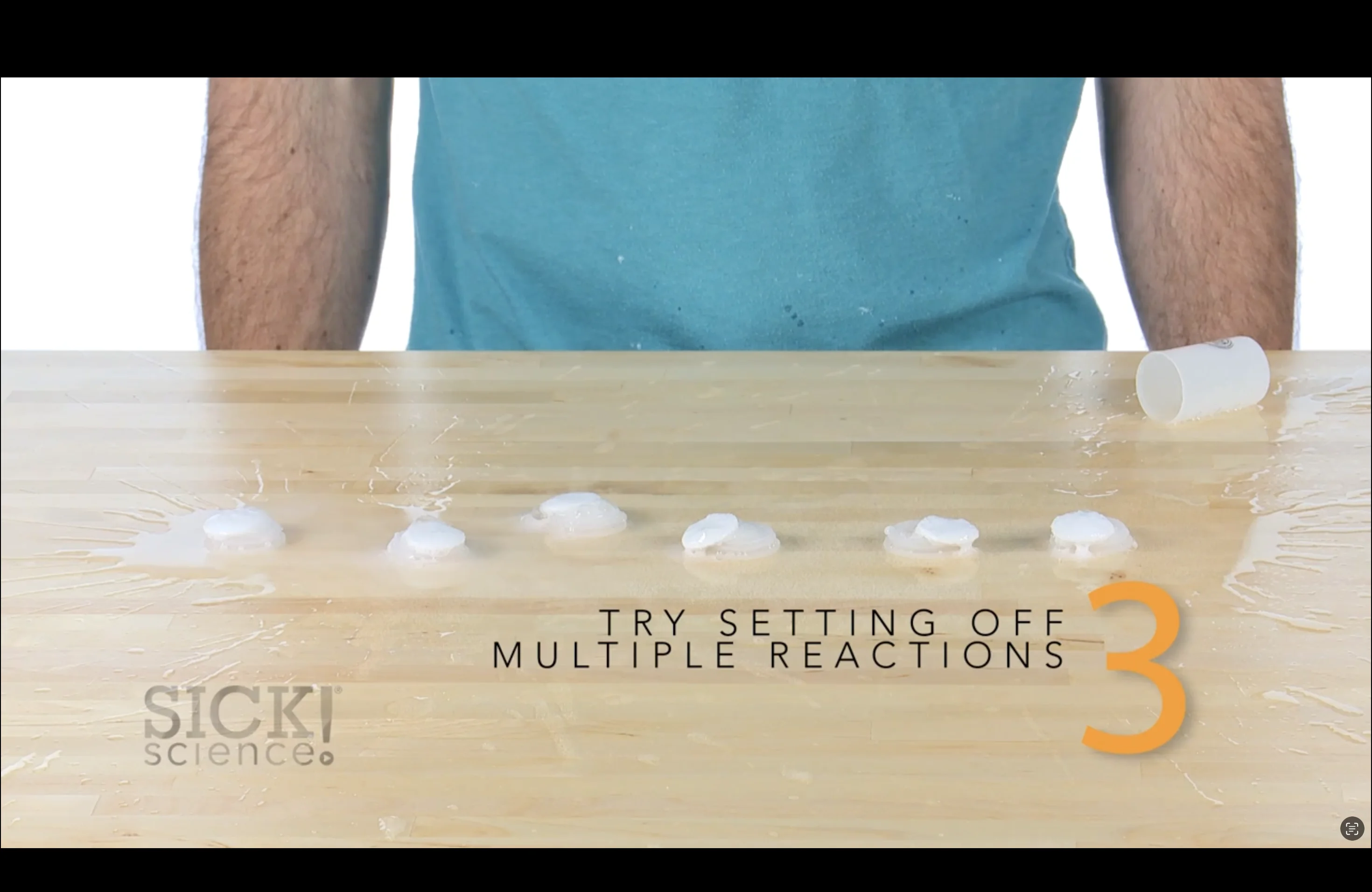
Prepare for a blast of excitement and chemistry with the high school science experiment – “Film Canister Explosions!” This project teaches students about chemical reactions and pressure build-up.
27. Investigating Osmosis with Potato Slices
This hands-on experiment not only provides a practical understanding of osmosis but also highlights its relevance in everyday life, from understanding plant hydration to food preservation techniques.
28. Make Homemade Fly Trap
This captivating “Make Homemade Fly Trap!” project invites students to explore the principles of pest control and observe the behavior of flies.
29. Hydroponics: Gardening Without Soil
This exciting project invites students to explore innovative agricultural practices that harness water and nutrient solutions to grow plants.
By setting up their hydroponic system and nurturing plants through this method, students will witness the fascinating dynamics of root development and nutrient absorption.
30. Clothespin Airplane
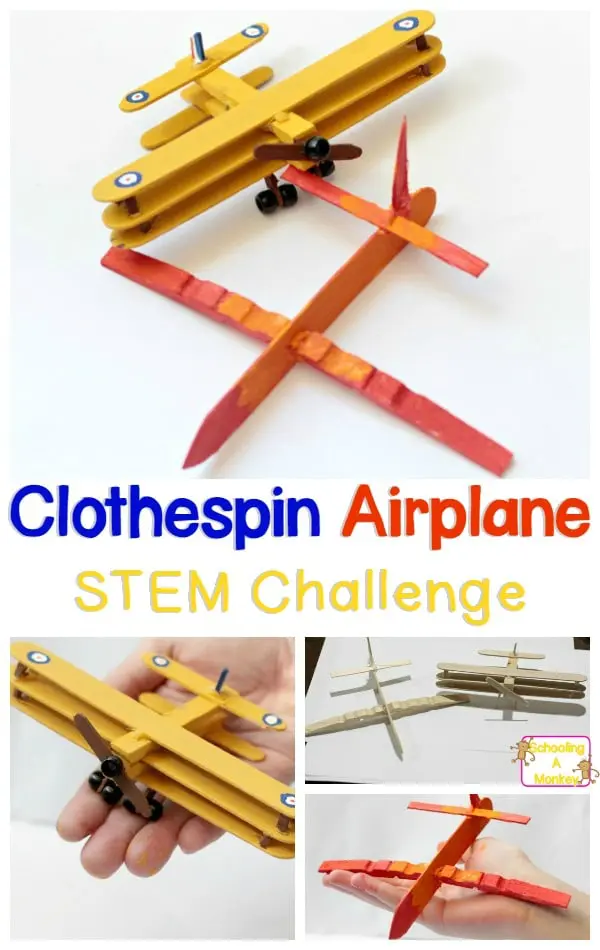
As they test and modify their creations, students will learn about the principles of lift, thrust, and drag, gaining a deeper understanding of how these forces come together to keep airplanes soaring through the skies.
Learn more: Steamsational
Similar Posts:
- 68 Best Chemistry Experiments: Learn About Chemical Reactions
- 37 Water Science Experiments: Fun & Easy
- Top 100 Fine Motor Skills Activities for Toddlers and Preschoolers
Leave a Comment Cancel reply
Save my name and email in this browser for the next time I comment.
- Grades 6-12
- School Leaders
Get Your Free 21st Century Timeline Poster ✨
70 Best High School Science Fair Projects in Every Subject
Fire up the Bunsen burners!
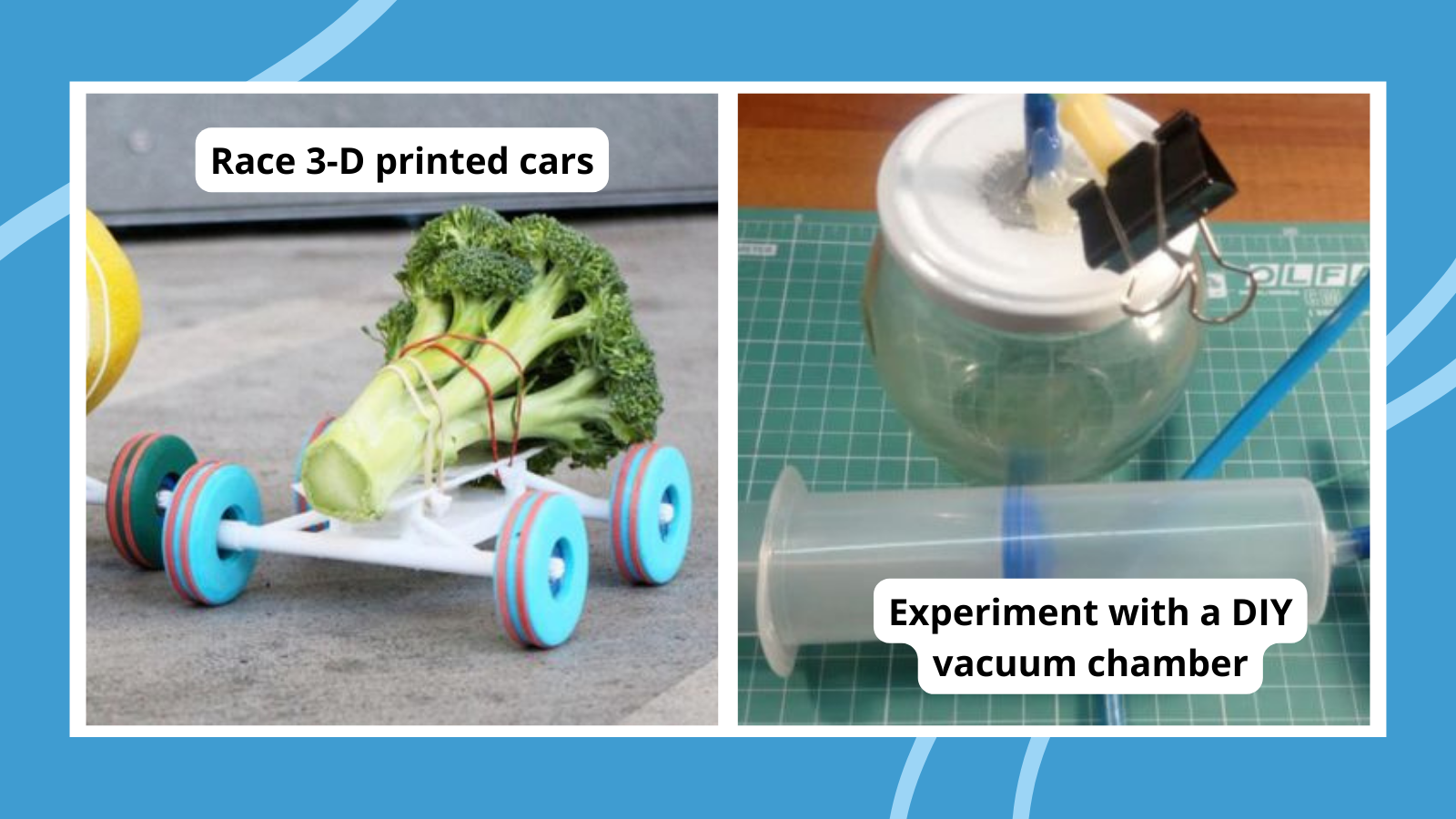
The cool thing about high school science fair projects is that kids are old enough to tackle some pretty amazing concepts. Some science experiments for high school are just advanced versions of simpler projects they did when they were younger, with detailed calculations or fewer instructions. Other projects involve fire, chemicals, or other materials they couldn’t use before.
Note: Some of these projects were written as classroom labs but can be adapted to become science fair projects too. Just consider variables that you can change up, like materials or other parameters. That changes a classroom activity into a true scientific method experiment!
To make it easier to find the right high school science fair project idea for you, we’ve rated all the projects by difficulty and the materials needed:
Difficulty:
- Easy: Low or no-prep experiments you can do pretty much anytime
- Medium: These take a little more setup or a longer time to complete
- Advanced: Experiments like these take a fairly big commitment of time or effort
- Basic: Simple items you probably already have around the house
- Medium: Items that you might not already have but are easy to get your hands on
- Advanced: These require specialized or more expensive supplies to complete
- Biology and Life Sciences High School Science Fair Projects
Chemistry High School Science Fair Projects
Physics high school science fair projects, engineering high school stem fair projects, biology and life science high school science fair projects.
Explore the living world with these biology science project ideas, learning more about plants, animals, the environment, and much more.
Extract DNA from an onion
Difficulty: Medium / Materials: Medium
You don’t need a lot of supplies to perform this experiment, but it’s impressive nonetheless. Turn this into a science fair project by trying it with other fruits and vegetables too.
Re-create Mendel’s pea plant experiment
Difficulty: Medium / Materials: Medium ADVERTISEMENT
Gregor Mendel’s pea plant experiments were some of the first to explore inherited traits and genetics. Try your own cross-pollination experiments with fast-growing plants like peas or beans.
Make plants move with light
By this age, kids know that many plants move toward sunlight, a process known as phototropism. So high school science fair projects on this topic need to introduce variables into the process, like covering seedling parts with different materials to see the effects.
Test the 5-second rule
We’d all like to know the answer to this one: Is it really safe to eat food you’ve dropped on the floor? Design and conduct an experiment to find out (although we think we might already know the answer).
Find out if color affects taste
Just how interlinked are all our senses? Does the sight of food affect how it tastes? Find out with a fun food science fair project like this one!
See the effects of antibiotics on bacteria
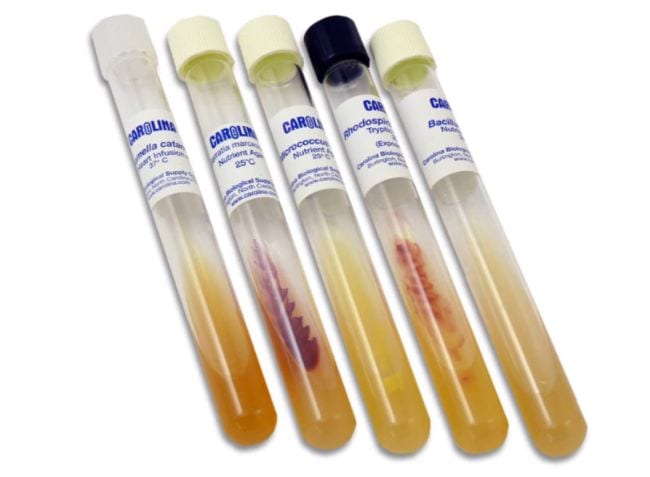
Difficulty: Medium / Materials: Advanced
Bacteria can be divided into two groups: gram-positive and gram-negative. In this experiment, students first determine the two groups, then try the effects of various antibiotics on them. You can get a gram stain kit , bacillus cereus and rhodospirillum rubrum cultures, and antibiotic discs from Home Science Tools.
Learn more: Antibiotics Project at Home Science Tools
Witness the carbon cycle in action

Experiment with the effects of light on the carbon cycle. Make this science fair project even more interesting by adding some small aquatic animals like snails or fish into the mix.
Learn more: Carbon Cycle at Science Lessons That Rock
Look for cell mitosis in an onion
Cell mitosis (division) is actually easy to see in action when you look at onion root tips under a microscope. Students will be amazed to see science theory become science reality right before their eyes. Adapt this lab into a high school science fair project by applying the process to other organisms too.
Test the effects of disinfectants

Grow bacteria in a petri dish along with paper disks soaked in various antiseptics and disinfectants. You’ll be able to see which ones effectively inhibit bacteria growth.
Learn more: Effectiveness of Antiseptics and Disinfectants at Amy Brown Science
Pit hydroponics against soil
Growing vegetables without soil (hydroponics) is a popular trend, allowing people to garden just about anywhere.
More Life Sciences and Biology Science Fair Projects for High School
Use these questions and ideas to design your own experiment:
- Explore ways to prevent soil erosion.
- What are the most accurate methods of predicting various weather patterns?
- Try out various fertilization methods to find the best and safest way to increase crop yield.
- What’s the best way to prevent mold growth on food for long-term storage?
- Does exposure to smoke or other air pollutants affect plant growth?
- Compare the chemical and/or bacterial content of various water sources (bottled, tap, spring, well water, etc.).
- Explore ways to clean up after an oil spill on land or water.
- Conduct a wildlife field survey in a given area and compare it to results from previous surveys.
- Find a new use for plastic bottles or bags to keep them out of landfills.
- Devise a way to desalinate seawater and make it safe to drink.
Bunsen burners, beakers and test tubes, and the possibility of (controlled) explosions? No wonder chemistry is such a popular topic for high school science fair projects!
Break apart covalent bonds
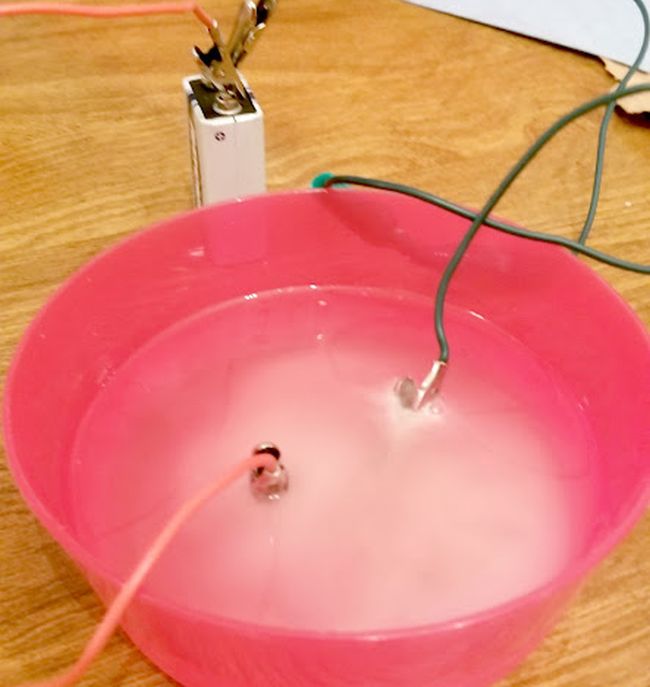
Break the covalent bond of H 2 O into H and O with this simple experiment. You only need simple supplies for this one. Turn it into a science fair project by changing up the variables—does the temperature of the water matter? What happens if you try this with other liquids?
Learn more: Covalent Bonds at Teaching Without Chairs
Measure the calories in various foods
Are the calorie counts on your favorite snacks accurate? Build your own calorimeter and find out! This kit from Home Science Tools has all the supplies you’ll need.
Detect latent fingerprints
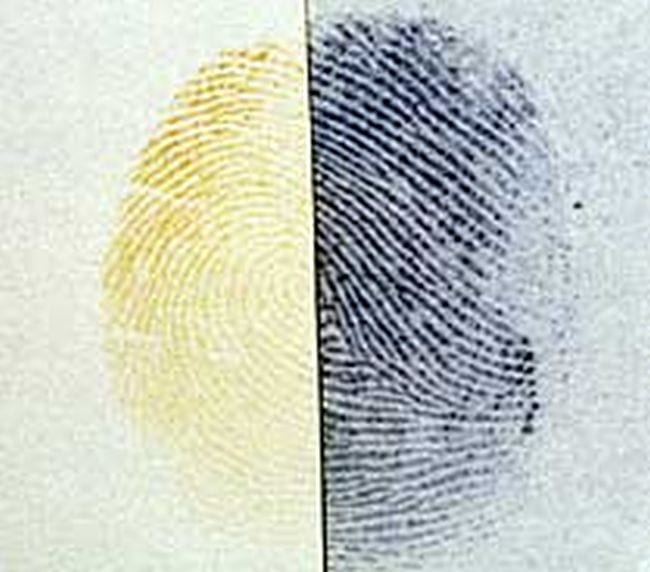
Forensic science is engrossing and can lead to important career opportunities too. Explore the chemistry needed to detect latent (invisible) fingerprints, just like they do for crime scenes!
Learn more: Fingerprints Project at Hub Pages
Use Alka-Seltzer to explore reaction rate
Difficulty: Easy / Materials: Easy
Tweak this basic concept to create a variety of high school chemistry science fair projects. Change the temperature, surface area, pressure, and more to see how reaction rates change.
Determine whether sports drinks provide more electrolytes than OJ
Are those pricey sports drinks really worth it? Try this experiment to find out. You’ll need some special equipment for this one; buy a complete kit at Home Science Tools .
Turn flames into a rainbow
You’ll need to get your hands on a few different chemicals for this experiment, but the wow factor will make it worth the effort! Make it a science project by seeing if different materials, air temperature, or other factors change the results.
Discover the size of a mole
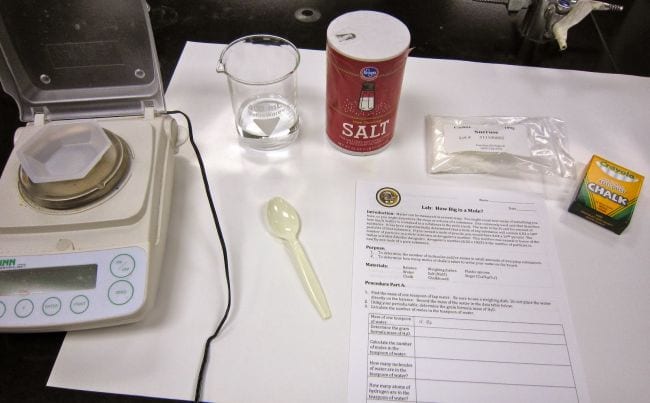
The mole is a key concept in chemistry, so it’s important to ensure students really understand it. This experiment uses simple materials like salt and chalk to make an abstract concept more concrete. Make it a project by applying the same procedure to a variety of substances, or determining whether outside variables have an effect on the results.
Learn more: How Big Is a Mole? at Amy Brown Science

Cook up candy to learn mole and molecule calculations
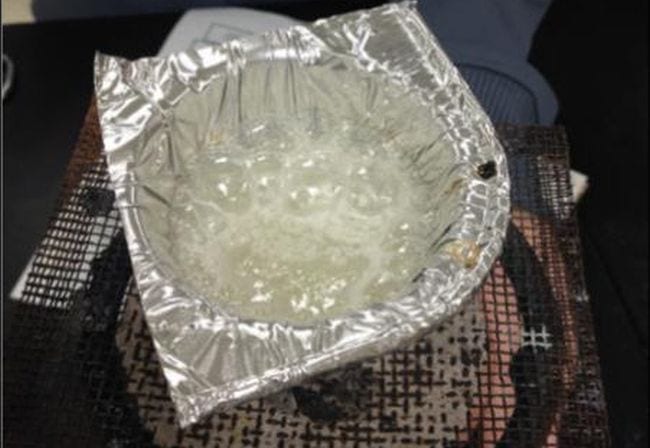
This edible experiment lets students make their own peppermint hard candy while they calculate mass, moles, molecules, and formula weights. Tweak the formulas to create different types of candy and make this into a sweet science fair project!
Learn more: Candy Chemistry at Dunigan Science on TpT
Make soap to understand saponification

Take a closer look at an everyday item: soap! Use oils and other ingredients to make your own soap, learning about esters and saponification. Tinker with the formula to find one that fits a particular set of parameters.
Learn more: Saponification at Chemistry Solutions on TpT
Uncover the secrets of evaporation
Explore the factors that affect evaporation, then come up with ways to slow them down or speed them up for a simple science fair project.
Learn more: Evaporation at Science Projects
More Chemistry Science Fair Projects for High School
These questions and ideas can spark ideas for a unique experiment:
- Compare the properties of sugar and artificial sweeteners.
- Explore the impact of temperature, concentration, and seeding on crystal growth.
- Test various antacids on the market to find the most effective product.
- What is the optimum temperature for yeast production when baking bread from scratch?
- Compare the vitamin C content of various fruits and vegetables.
- How does temperature affect enzyme-catalyzed reactions?
- Investigate the effects of pH on an acid-base chemical reaction.
- Devise a new natural way to test pH levels (such as cabbage leaves).
- What’s the best way to slow down metal oxidation (the form of rust)?
- How do changes in ingredients and method affect the results of a baking recipe?
When you think of physics science projects for high school, the first thing that comes to mind is probably the classic build-a-bridge. But there are plenty of other ways for teens to get hands-on with physics concepts. Here are some to try.
Remove the air in a DIY vacuum chamber
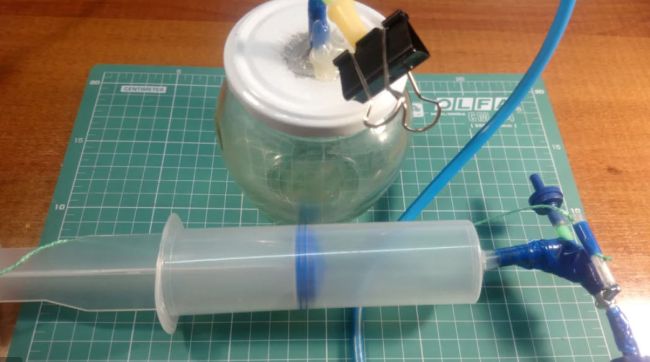
You can use a vacuum chamber to do lots of cool high school science fair projects, but a ready-made one can be expensive. Try this project to make your own with basic supplies.
Learn more: Vacuum Chamber at Instructables
Put together a mini Tesla coil
Looking for a simple but showy high school science fair project? Build your own mini Tesla coil and wow the crowd!
Boil water in a paper cup
Logic tells us we shouldn’t set a paper cup over a heat source, right? Yet it’s actually possible to boil water in a paper cup without burning the cup up! Learn about heat transfer and thermal conductivity with this experiment. Go deeper by trying other liquids like honey to see what happens.
Build a better light bulb
Emulate Edison and build your own simple light bulb. You can turn this into a science fair project by experimenting with different types of materials for filaments.
Measure the speed of light—with your microwave
Grab an egg and head to your microwave for this surprisingly simple experiment. By measuring the distance between cooked portions of egg whites, you’ll be able to calculate the wavelength of the microwaves in your oven and, in turn, the speed of light.
Generate a Lichtenberg figure
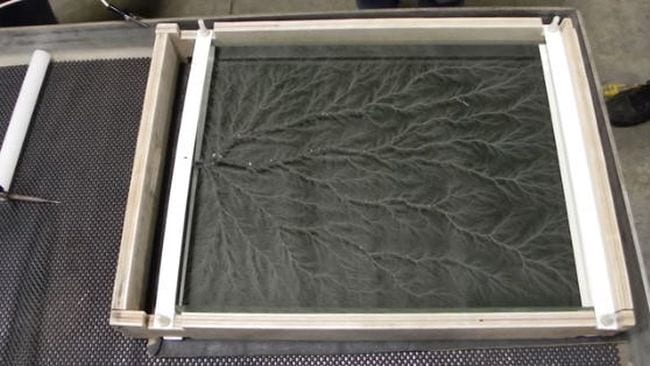
See electricity in action when you generate and capture a Lichtenberg figure with polyethylene sheets, wood, or even acrylic and toner. Change the electrical intensity and materials to see what types of patterns you can create.
Learn more: Lichtenberg Figure at Science Notes
Explore the power of friction with sticky note pads
Difficulty: Medium / Materials: Basic
Ever try to pull a piece of paper out of the middle of a big stack? It’s harder than you think it would be! That’s due to the power of friction. In this experiment, students interleave the sheets of two sticky note pads, then measure how much weight it takes to pull them apart. The results are astonishing!
Build a cloud chamber to prove background radiation
Ready to dip your toe into particle physics? Learn about background radiation and build a cloud chamber to prove the existence of muons.
Measure the effect of temperature on resistance
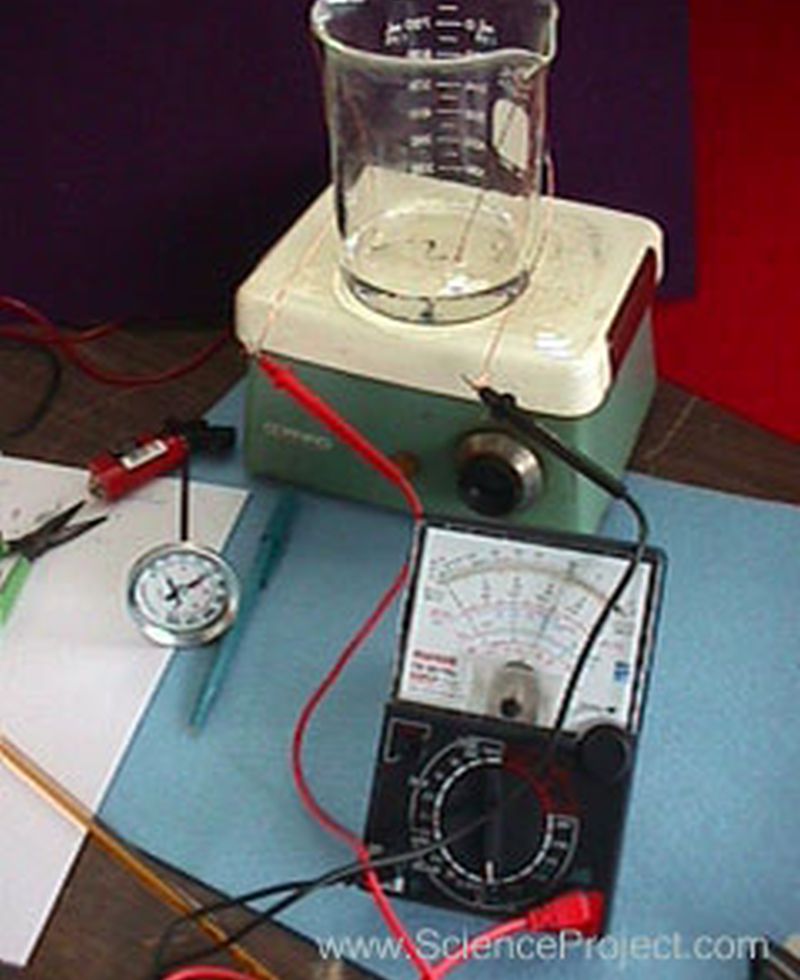
This is a popular and classic science fair experiment in physics. You’ll need a few specialized supplies, but they’re pretty easy to find.
Learn more: Temperature and Resistance at Science Project
Launch the best bottle rocket
A basic bottle rocket is pretty easy to build, but it opens the door to lots of different science fair projects. Design a powerful launcher, alter the rocket so it flies higher or farther, or use only recycled materials for your flyer.
More Physics Science Fair Projects for High School
Design your own experiment in response to these questions and prompts.
- Determine the most efficient solar panel design and placement.
- What’s the best way to eliminate friction between two objects?
- Explore the best methods of insulating an object against heat loss.
- What effect does temperature have on batteries when stored for long periods of time?
- Test the effects of magnets or electromagnetic fields on plants or other living organisms.
- Determine the best angle and speed of a bat swing in baseball.
- What’s the best way to soundproof an area or reduce noise produced by an item?
- Explore methods for reducing air resistance in automotive design.
- Use the concepts of torque and rotation to perfect a golf swing.
- Compare the strength and durability of various building materials.
Many schools are changing up their science fairs to STEM fairs, to encourage students with an interest in engineering to participate. Many great engineering science fair projects start with a STEM challenge, like those shown here. Use these ideas to spark a full-blown project to build something new and amazing!
Construct a model maglev train
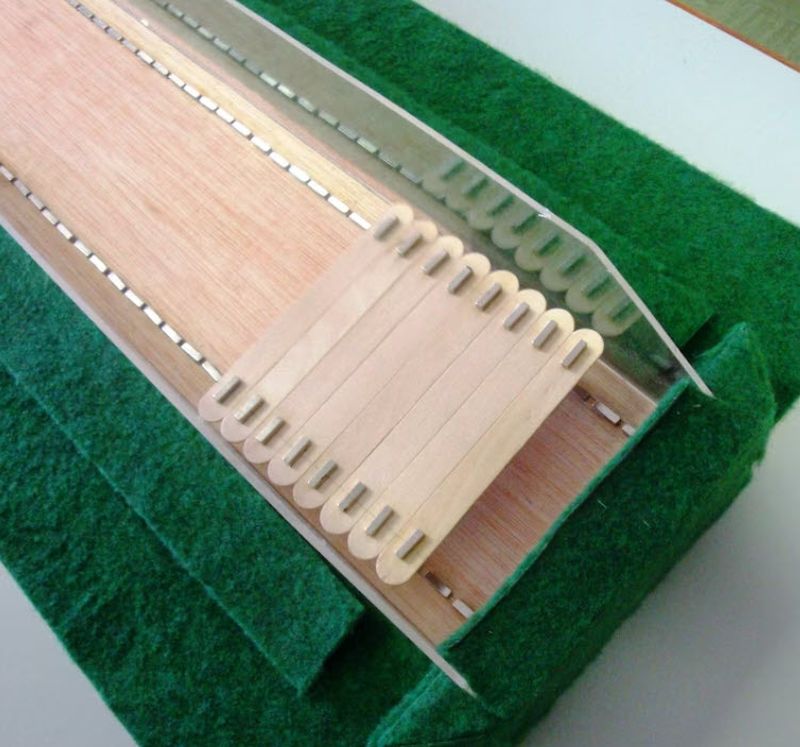
Maglev trains may just be the future of mass transportation. Build a model at home, and explore ways to implement the technology on a wider basis.
Learn more: Maglev Model Train at Supermagnete
Design a more efficient wind turbine
Wind energy is renewable, making it a good solution for the fossil fuel problem. For a smart science fair project, experiment to find the most efficient wind turbine design for a given situation.
Re-create Da Vinci’s flying machine
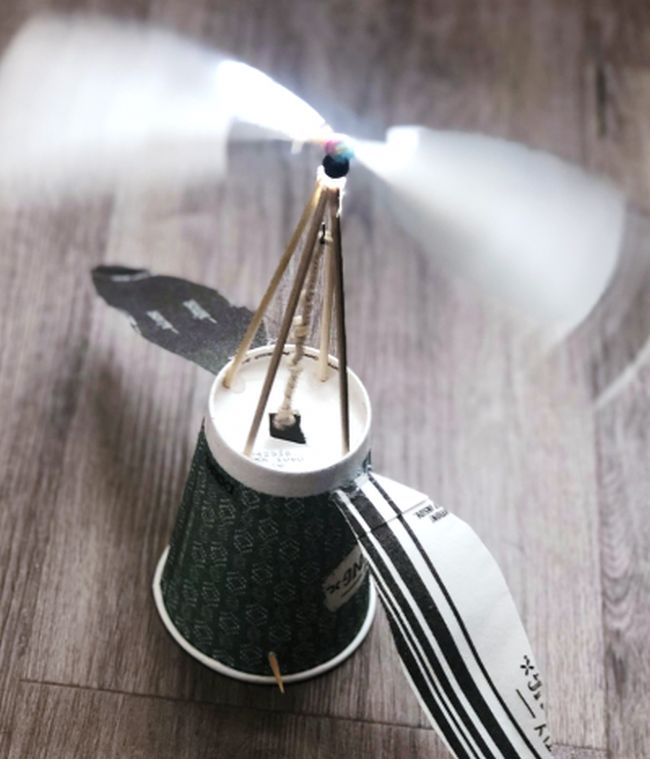
Da Vinci sketched several models of “flying machines” and hoped to soar through the sky. Do some research into his models and try to reconstruct one of your own.
Learn more: Da Vinci Flying Machine at Student Savvy
Design a heart-rate monitor
Smartwatches are ubiquitous these days, so pretty much anyone can wear a heart-rate monitor on their wrist. But do they work any better than one you can build yourself? Get the specialized items you need like the Arduino LilyPad Board on Amazon.
Race 3D printed cars
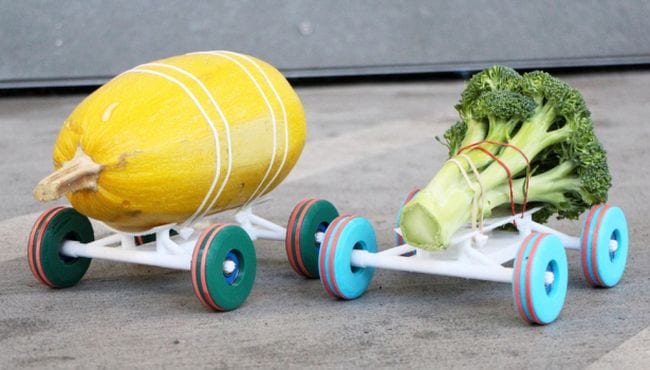
3D printers are a marvel of the modern era, and budding engineers should definitely learn to use them. Use Tinkercad or a similar program to design and print race cars that can support a defined weight, then see which can roll the fastest! (No 3D printer in your STEM lab? Check the local library. Many of them have 3D printers available for patrons to use.)
Learn more: 3D Printed Cars at Instructables
Grow veggies in a hydroponic garden
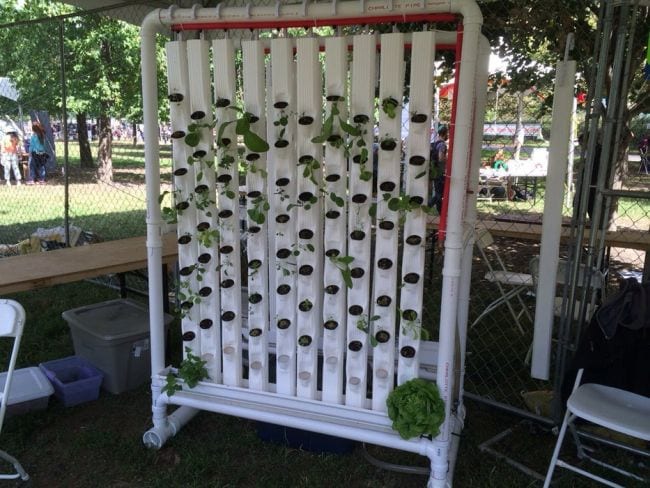
Hydroponics is the gardening wave of the future, making it easy to grow plants anywhere with minimal soil required. For a science fair STEM engineering challenge, design and construct your own hydroponic garden capable of growing vegetables to feed a family. This model is just one possible option.
Learn more: Hydroponics at Instructables
Grab items with a mechanical claw
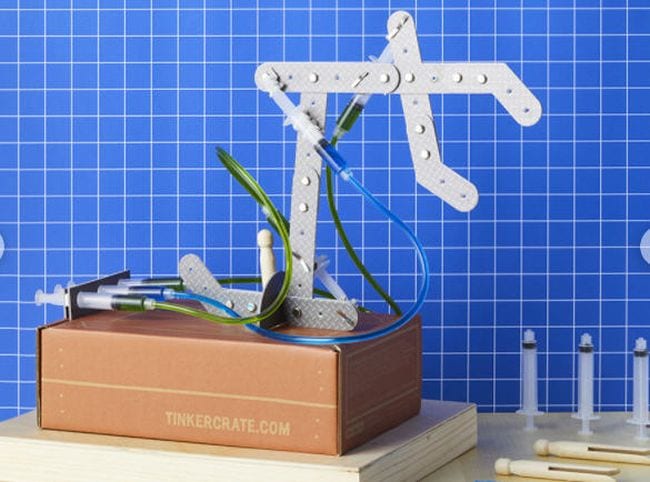
Delve into robotics with this engineering project. This kit includes all the materials you need, with complete video instructions. Once you’ve built the basic structure, tinker around with the design to improve its strength, accuracy, or other traits.
Learn more: Hydraulic Claw at KiwiCo
Construct a crystal radio
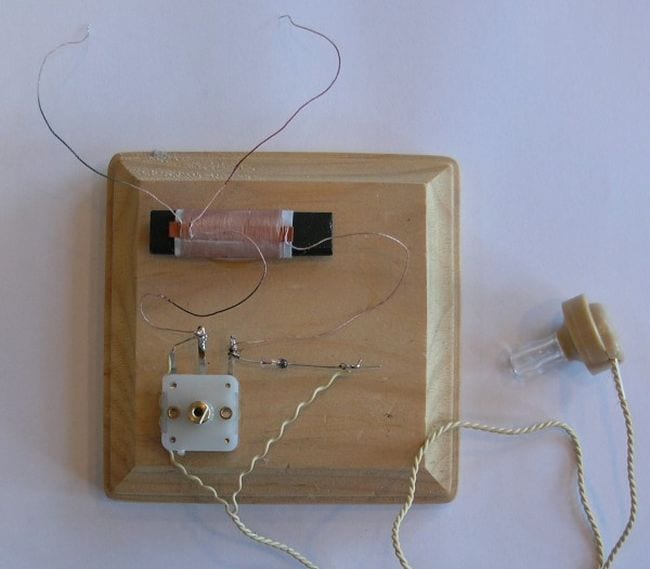
Return to the good old days and build a radio from scratch. This makes a cool science fair project if you experiment with different types of materials for the antenna. It takes some specialized equipment, but fortunately, Home Science Tools has an all-in-one kit for this project.
Learn more: Crystal Radio at Scitoys.com
Build a burglar alarm
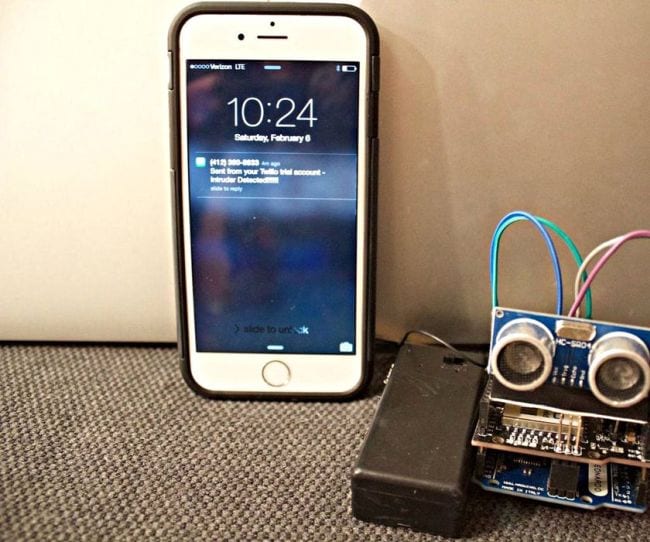
The challenge? Set up a system to alert you when someone has broken into your house or classroom. This can take any form students can dream up, and you can customize this STEM high school science experiment for multiple skill levels. Keep it simple with an alarm that makes a sound that can be heard from a specified distance. Or kick it up a notch and require the alarm system to send a notification to a cell phone, like the project at the link.
Learn more: Intruder Alarm at Instructables
Walk across a plastic bottle bridge
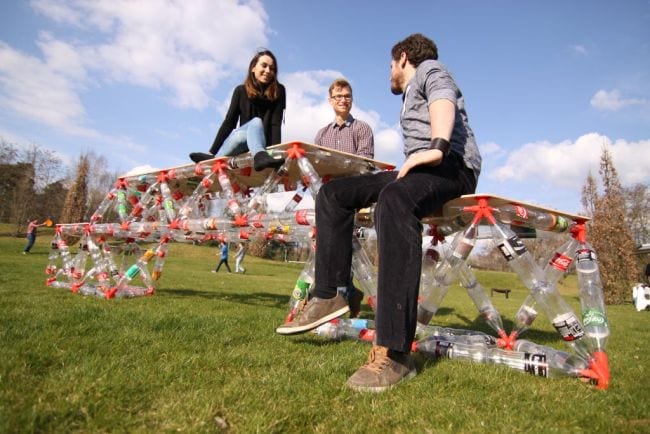
Balsa wood bridges are OK, but this plastic bottle bridge is really impressive! In fact, students can build all sorts of structures using the concept detailed at the link. It’s the ultimate upcycled STEM challenge!
Learn more: TrussFab Structures at Instructables
Looking for more science content? Check out the Best Science Websites for Middle and High School .
Plus, get all the latest teaching tips and tricks when you sign up for our newsletters .

You Might Also Like
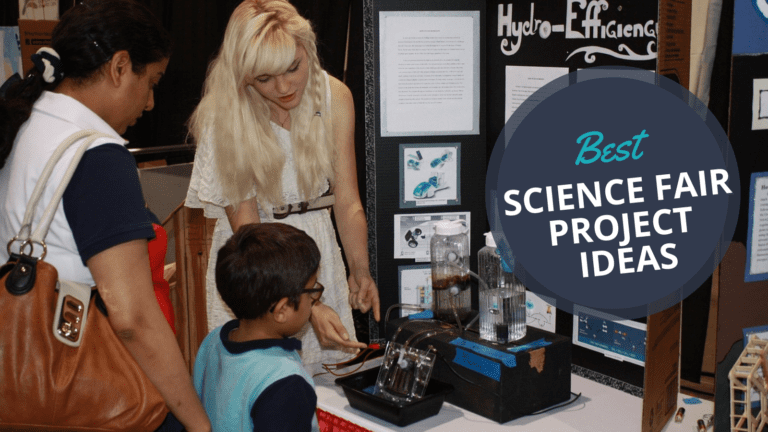
The Big List of Science Fair Project Ideas, Resources, and More
Options for every age, interest, and skill level! Continue Reading
Copyright © 2024. All rights reserved. 5335 Gate Parkway, Jacksonville, FL 32256
9th Grade Science Fair Projects
Creative Project Ideas for High School Freshmen Who Love Science
- Ph.D., Biomedical Sciences, University of Tennessee at Knoxville
- B.A., Physics and Mathematics, Hastings College
Ninth grade is the first year of high school, so freshmen might find themselves competing against older students in a science fair. Even so, they stand every bit as good a chance of excelling and winning. The key to success is choosing an interesting project that doesn't necessarily take a lot of time to complete.
Gearing a Project to the 9th Grade Level
Ninth graders have a lot going on, so it's best to choose a project idea that can be developed and completed over the space of a few weeks or less. Since high school students are expected to be familiar with word processing programs and printers, the quality of the presentation is very important.
Are you making a poster? Be sure to make it as professional as possible. Also, remember that accurately citing sources is critical to any successful project. Always cite any references used in developing your experiment.
9th Grade Science Fair Project Ideas
- Teeth whiteners : Find the shade of white that matches your teeth. Brush your teeth using a teeth-whitening toothpaste or gum. What color are your teeth now? To obtain additional data, have other family members test different products and monitor their results.
- Seed germination: Can you affect or improve the germination rate of seeds by pre-rinsing them in a chemical before planting them? Examples of chemicals to try include hydrogen peroxide solution , diluted hydrochloric acid solution, diluted isopropyl alcohol solution , and fruit juice. Some of these agents are thought to be able to loosen the seed coat surrounding the plant embryo.
- Hair conditioner: Using a microscope, determine whether hair conditioner affects the condition of hair (either comparing brands or comparing with conditioner to without-conditioner). The goal is to get empirical data, such as a diameter measurement of each hair strand and the distance a strand can stretch before it breaks.
- Bread shelf-life: What's the best way to store bread to keep it fresh for the longest time?
- Optimizing appliance efficiency: What things can you do to improve the efficiency or effectiveness of your clothes dryer or water heater—or any device? For example, are there any actions you can take or changes you can make that will decrease the length of time it takes for your dryer to dry a load of towels?
- Music and memory: Does listening to music while you study affect your ability to memorize facts?
- Smoke and plant transpiration: Does the presence of smoke in the air affect plant transpiration?
- The impact of eye color on peripheral vision : Does eye color affect peripheral vision? Supposedly, people with darker eyes tend to have wider pupils for a given amount of light than people with light-colored irises. If you have a more open pupil, does it give you measurably better peripheral vision? Another idea to test would be to see if you have the same peripheral vision in bright light as compared with dim light.
- Acid snow? Most of us have heard about acid rain, but do you know the pH range of snow? If you live in an area with snow, test its pH. How does the pH of snow compare with the pH of rain from the same region?
- Soil erosion: What methods of preventing soil erosion work best? For example, what is effective at preventing erosion in your yard?
- Localized noise reduction: What can you do to reduce noise pollution in a room? What factors contribute to noise pollution inside a residence?
- Seed viability: Is there a test you can perform to predict whether or not a seed will germinate? What factors can you measure that might be used to construct a test?
- The effects of magnets on insects and brine shrimp: Does an external magnetic field have any noticeable effect on animals such as brine shrimp, cockroaches, or fruit flies? You could use a strip magnet and containers of sample organisms and make observations to address this question.
- How is phosphorescence affected by light? Is the brightness of glow-in-the-dark (phosphorescent) materials affected by the light source (spectrum) used to make them glow or only by the intensity (brightness) of the light? Does the light source affect the length of time a phosphorescent material will glow?
- How do preservatives impact Vitamin C? Can you affect vitamin C (or another measurable vitamin) levels in juice (or another food) by adding a preservative to the juice?
- Insulation variables : What is the best thickness of insulation for preventing heat loss?
- How does energy input impact light bulb lifespan? Is light bulb lifespan affected by whether the bulb is run at full power? In other words, do dim bulbs last longer/shorter than bulbs run at their power rating?
- Speaker acoustics: What type of box material gives you the best sound for your speaker?
- How does temperature affect battery life? When comparing different brands of batteries: Is the brand that lasts the longest at a high temperature the same as that brand lasts the longest at a cold temperature?
- 5th Grade Science Fair Projects
- 3rd Grade Science Fair Projects
- 8th Grade Science Fair Project Ideas
- 7th Grade Science Fair Projects
- Science Fair Project Ideas
- 11th Grade Science Fair Projects
- Science Fair Project Ideas for 12th Graders
- 6th Grade Science Fair Projects
- First-Grade Science Projects
- 10th Grade Science Fair Projects
- Science Fair Project Help
- Chemistry Science Fair Project Ideas
- 4th Grade Science Fair Projects
- Why Do a Science Fair Project?
- Middle School Science Fair Project Ideas
- High School Science Fair Projects
Biology Research Projects for High School Students: 20 Ideas To Try This Summer

By János Perczel
Co-founder of Polygence, PhD from MIT
16 minute read
Biology and biomedical research are two of the most popular academic disciplines among high schoolers. If you’re someone who’s interested in those fields and you’re looking for research opportunities this summer, you’ve come to the right place! With the study of biology, not only can you gain a better understanding of the natural world, but your research can have practical applications in fields like medicine, agriculture, and environmental science. Whether you’re just starting out in your exploration of biology, have taken a biology class in school, or you’re looking to do some advanced research to submit to your state’s science fair , we have level-appropriate ideas for you!
With a variety of topics like cancer treatment, genetics, neurodegenerative diseases, and marine life, we’ve got you covered. Here is a curated list of 20 different research project ideas to get those creative juices flowing. If you’re hungry for more, head over to our comprehensive Project Ideas database here and browse over 2800 more ideas!
Research YOUR fave areas of Biology and Medicine
Polygence pairs you with an expert mentor in to create a passion project around biology and medicine. Together, you work to create a high quality research project that is uniquely your own. We also offer options to explore multiple topics, or to showcase your final product!
Human Body Project Ideas
Rate of cognitive decline in different elevations.
Oxygen partial pressure decreases with altitude, challenging blood oxygenation which may affect brain function. If you’ve ever felt some altitude sickness, then this is exactly what’s happening. This is because the atmospheric pressure decreases at higher elevations, leading to a decrease in the partial pressures of the gasses in the air, including oxygen. And of course, oxygen is needed for us to function. What is the effect on brain health/ cognition in sudden increased elevation: say, climbing Mount Everest? Does chronic exposure to high elevations increase the likelihood of dementia? In this project, a meta-analysis of published works examining the effects of altitude on cognition would be conducted.
Idea by mentor Alyssa
Building a Blood Vessel
Use online graphics to illustrate how a blood vessel forms. Blood vessels are structures that carry blood and are responsible for transporting nutrients and oxygen throughout the body. There are three main types of blood vessels: arteries, veins, and capillaries. For this project, complete a literature search to understand what is known about blood vessel growth. Then, utilize this information to generate a graphic with no words to demonstrate how the vasculature (network of blood vessels) forms. The goal of this project is to explain science without using text and therefore make it more available to a larger community.
Idea by mentor Natalie
Examining the bacterial profile of various households
As of late, bacterial microbiomes have been a huge and interesting topic in the field of bacteriology as they play an important role in human health. Bacterial microbiomes are communities of bacteria that live on or outside organisms. They’re found in various parts of the human body, and help us to digest food and regulate our immune system. In this project, you will seek to understand how skin microbiomes can differ between different individuals of different households. This project will require making different bacterial media that can be made at home selecting for various microorganisms. If you’re new to preparing bacterial media, check out this resource here!
Idea by mentor Hamilton
Regulation of Circadian Clocks
Sleep is known to be governed by two distinct processes: a circadian clock that aligns sleep and wakefulness to the solar day and the sleep homeostat that encodes for sleep debt as a compensatory mechanism against sleep loss. You’ve most likely heard about circadian rhythm and our body’s internal clock, and circadian regulation of sleep is a fundamental process that allows animals to anticipate sleepiness or wakefulness consistently every day. These mechanisms can be regulated in multiple ways: at the gene, protein, gene, and clock neuronal level. In this project, we will focus on 1) how to efficiently digest primary and review articles to compile and condense information, 2) investigate how circadian clocks are regulated at these different genetic levels, and 3) try to effectively summarize the information we've gathered. We can present this information in a variety of ways, and what the final product looks like is up to you.
Idea by mentor Oscar
The Biology of Aging
Aging is the number one risk factor for a variety of diseases including cancer, neurodegenerative disease, and loss of hearing/sight. We are only now beginning to truly understand the process of aging and have even started to uncover ways that we could stop, or potentially reverse, the effects of aging. What are the hallmarks/signs of aging? How do researchers study 'aging'? How does human lifespan and aging compare to the rest of the animal kingdom? Is it possible to stop or reverse the effects of aging? What advancements are being made related to this? We could explore these questions or brainstorm others you might have about the biology of aging.
Idea by mentor Emily
Animals, Plants, and Nature Project Ideas
How genetically engineered mosquitoes are reducing rates of vector-borne diseases such as zika.
Many countries are already releasing millions of genetically engineered mosquitoes into the wild every week. These mosquitoes have been modified to reduce their ability to transmit disease-causing pathogens like dengue fever, Zika, and malaria, and are sent into the wild to mate with disease-carrying mosquitoes. However, this is still controversial as some people are concerned about the unintended consequences on the environment. What could be the potential pros and cons for this? The project will mainly focus on doing meta analysis of articles and watching informative videos to understand how/why genetically engineered mosquitoes can be used to reduce rates of different diseases. Students will have the chance to use critical thinking and do in-depth research on genetic engineering techniques, how scientists determine breeding rates and number of insects released, and epidemiology of different bloodborne diseases.
Idea by mentor Vanessa
Efficacy of Marine Protected Areas
Marine protected areas (MPAs) are areas of ocean or coastal waters that are set aside for the conservation and sustainable use of marine resources. These areas are established by governments, NGOs, or other organizations, and they can take different forms, from fully protected "no-take" zones to areas with regulated fishing or other activities. Marine protected areas have the potential to guide sustainable resource management and protect biodiversity, but have a host of reasons for why they are not currently effective. Explore reasons for why MPAs may not be effective. Then develop a framework for mapping, modeling, and implementing an effective Marine Protected Area.
Bioinspiration: Do animals hold the answers?
Can the toxins produced by frogs help us fight antibiotic resistant bacteria strains? How can understanding how lizards and newts regrow their limbs help us improve wound treatment? Why do tilapia skins help with burns? Discover the role of animals in the development of modern medicine as well as its potential. Are there any ethical concerns with these developments and findings? If so, what are they and do they matter? Share your findings in a research proposal, article, or presentation.
Idea by mentor Cheyenne
How Climate Change Can Affect Future Distributions of Rare Species
Climate change, such as global warming and longer drought, can threaten the existence of some of the rarest plants on earth. It is important to understand how future suitable habitats will change for these rare species so that we can target our conservation efforts in specific areas. In this project, you will identify a rare species that you like (it can be animals, plants, or fungi!), and gather the data online on its current occurrences. Then you will learn how to perform species distribution modeling to map its current and future suitable habitat areas. To get you started on learning species distribution modeling, check out this Youtube resource here. The changes in the amount or location of future suitable habitats can significantly affect the destiny of a rare species. By doing this project, you will not only learn skills in data analyses but also become the best ambassador for this rare species that you love.
Idea by mentor Yingtong
A Reef’s Best Frenemies
Coral reefs are in global decline. A primary cause of this is "coral bleaching" which results in the white reefs we often see in the news. Coral bleaching is actually the breakdown in the partnership between the coral animal and tiny, symbiotic algae that live within its cells. Corals and algae have a variety of thermal tolerances which are likely decided by genetic and environmental factors. However, despite how important this relationship is, it's currently very poorly understood. This project would review existing literature on the symbiotic partnernship and try to identify factors that predict bleaching and thermal resilience.
Idea by mentor Carly
Dive in to BioMed NOW!
Register to get paired with one of our expert mentors and to get started on exploring your passions today! You have agency in setting up your schedule for this research. Dive in now!
Diseases and Treatments Project Ideas
The understanding of a new and upcoming treatment: immunotherapy.
Immunotherapies have been growing in the past few years as alternative treatments for many types of cancer. These treatments work by boosting the patient's immune system to fight the disease, however it is not always effective. There are many types of immunotherapies with various nuances, but they all work to attack specific cells that are causing the disease. For this project, pick one of a few types of immunotherapy and deeply understand the mechanism of action and what is the current effectiveness against the cancer it treats.
Idea by mentor Hannah
Exploring The Cancer Genome Atlas data
There has been an explosion of publicly available data for cancer. The Cancer Genome Atlas was a research program with the purpose of creating a comprehensive catalog of genomic and molecular information about different types of cancer, with the aim of improving our understanding of the disease and developing new treatments. The dataset has been used to identify new cancer subtypes, develop diagnostic tests, and discover potential targets for new cancer therapies. Explore the implications and impact of The Cancer Genome Atlas data, and why it’s become so important.
Idea by mentor Hersh
Systematic Review and Meta-Analysis of Physiological Benefits of Fasting-induced Autophagy
Autophagy, meaning "self-eating", is a cellular process where damaged or unwanted components are disposed. Autophagy has been linked to various diseased pathologies, including cancer and heart disease. Fasting or specific dietary lifestyles may induce levels of autophagy in the human body. In this project, we will perform and systematic review and meta-analysis of fasting or diet-induced autophagy and its benefits on the body. You will gain skills in 1) searching and reviewing primary literature, 2) computational skills for performing data analysis (R language), and 3) writing your scientific findings.
Idea by mentor Jose
The Amyloid Hypothesis: Sifting through the controversy
For many years, scientists have thought that amyloid beta was the protein responsible for a patient developing Alzheimer's Disease symptoms. This "Amyloid Hypothesis" is now being questioned in light of current clinical data. Recently, drugs have been developed that reduce amyloid beta in patients. Surprisingly, the drugs worked in reducing amyloid beta, but it did not result in the slowing of disease pathology. Does this mean that the amyloid hypothesis is incorrect? Is amyloid beta less important in the progression of disease then what we once thought? This research project aims to explore the issues with the amyloid hypothesis and to assess where we stand in our understanding of amyloid beta's contribution to Alzheimer’s.
Idea by mentor Patrick
How do vaccines work?
During the COVID pandemic, vaccines have been all over the news! But how do they actually work? What’s the science behind them? Through this project, you will explore how vaccines work and the history of science behind vaccine development. While the final product of the projectwill be up to you, the ultimate goal of this project is for you to be a true public health advocate for vaccines and to be able to communicate why vaccines are so important in a way that the general public can understand.
Idea by mentor Helen
Sleep Disruption Profiles in Various Mouse Models of Alzheimer’s
Alzheimer's disease (AD) has been studied for decades but we are no closer to understanding the mechanisms of the disease. Because of the vast number of researchers studying AD, there are numerous models used to study the disease. All these models have different sleep profiles, phenotypes, disease onsets, sex differences etc. Therefore, in this project we will compile a document based on extensive literature review about the various models there are. We will focus on sleep profiles in these animals with an emphasis on male and female differences. This information is valuable because it is important to know which model is best to use to answer your scientific questions and there is a lot of criticism (by other scientists) that can be brought on by the model chosen so you need to be able to justify your choice. This project will also introduce you to the world of AD research and some of the gaps in knowledge in the field.
Idea by mentor Shenee
Rethinking The Treatment Of Neurodegenerative Diseases
Neurodegenerative diseases affect millions of people worldwide. They are conditions that affect the nervous system, particularly the brain and spinal cord, and examples include Alzheimer’s and Parkinson’s. While billions of dollars have been spent trying to find treatments for the disease, very few drugs and therapies have had a meaningful impact on slowing down disease progression. This is often because by the time someone is diagnosed with a disease, it has progressed too far for a treatment to have a substantial effect. Some recent approaches to treatment have turned to looking for early indications of the disease (termed "biomarkers") that can occur before the onset of symptoms. By diagnosing disease and beginning treatment before symptoms arise, these treatments could have a more profound effect in slowing down the progression of disease. Students could review the recent progress being made on identifying biomarkers for neurodegenerative diseases, and either write a paper or even record a podcast on their findings!
Idea by mentor David
Genetics Project Ideas
Height and genetics: nature or nurture.
How much do your genes determine your height? How much do nutrition and environmental factors play a role? What gene variants are implicated in height differences and what is the role of epigenetics? Epigenetics is the study of heritable changes in gene expression or cellular phenotype that occur without changes to the underlying DNA sequence. These changes can be influenced by diet and lifestyle. We will access and analyze an open dataset on twins to estimate the correlation between monozygotic twins (who have the exact same DNA) and height. You will learn to use R to open a dataset, analyze data with statistical methods such the student’s t-test, and display your data as graphs and charts. Finally, you will learn how to make a research presentation on height and genetics, describe the research methods, and present the data in a compelling and thorough way.
Idea by mentor Adeoluwa
The World of Personalized Medicine
Similar to our fingerprints, our genetic code is also unique to each individual person. Our genetic code is what determines our hair color, height, eye color, skin tone...just about everything! For those that develop diseases such as cancer, their genetic code found inside the malignant cells that comprise a tumor may also be unique to them or to certain groups of people with similar mutations (the drivers of disease). So why is it that we treat each person the same way even though the genetic drivers of that disease may be disparate? The world of Personalized Medicine is new and exciting and looks to circumvent this problem. Personalized Medicine (also known as precision medicine) uses the genetic code of a patients disease to guide treatment options that prove to be highly efficacious. Together, lets write a review on a disease of your choice that could benefit from Personalized Medicine based on current literature and research.
Idea by mentor Somer
General Biology Project Ideas
Teach a biology concept two ways: to your fellow students and to the general public.
One of the best ways to learn is to teach. Choose a biological concept that interests you and prepare a lesson and or demo on it. The format should be a video recording of yourself teaching (a la Khan Academy or a Zoom class), but the other details are up to you. Consider incorporating a demonstration (e.g. how can you use items from your kitchen to illustrate properties of mixtures?) or animation (e.g. to illustrate molecular motion). Also consider how you will check that your students understand the concept(s) and/or skill(s) you have taught them. Prepare and record two versions of your lesson: one intended for your peers and one for the general public. How will the versions differ to reflect these different audiences? You will learn what it's like to teach, gain a much greater understanding of your chosen concept(s)/skill(s), and learn how to communicate science to different audiences.
Idea by mentor Alexa
Once you’ve picked a project idea, check out some of our resources to help you progress with your project! Whether you’re stuck on how to cite sources , how to come up with a great thesis statement , or how to showcase your work once it’s finished , we’ve created blog posts to help you out. If you’re interested in doing one of the biology research projects with the help of an amazing mentor at Polygence, apply now ! If you would like some help with coming up with your own idea, book a complimentary consultation call with our admissions team here ! For more biology and science research information, check out our comprehensive list of research opportunities for high school students .
Feeling Inspired?
Interested in doing an exciting research project? Click below to get matched with one of our expert mentors!
- DIY lists /
Science Fair Projects for 9th Graders

These science fair projects for 9th grade are perfect for older kids to explore advanced science concepts and tinker with some more exciting materials.

(Ages 9-16 )
Water squirters work by pressurizing reservoirs of water with air. As you pump the squirter, it gradually adds air to the reservoir, increasing the pressure. When you pull the trigger, the pressure is allowed to release and a stream of water shoots out!
In this DIY project, we'll learn how to use the exact sample principles found in water squirters to launch a water rocket sky-high! Follow along with these simple steps and you'll be blasting off in no time.
Want to make a bottle rocket without the hassle of gathering materials? Blast off with a Bottle Rocket crate from the KiwiCo Store ! It includes a step-by-step video tutorial link, illustrated blueprint instructions, all the materials, and a special-edition Tinker Zine magazine for more project fun!
(Ages 7-16 )
Make a tea bag fly with heat! The flying tea bag experiment is a similar concept to a hot air balloon, but you can do it right at home. This project is simple to create, but impressive to kids and adults alike!
Want to learn more about chemistry without the hassle of gathering materials? Explore the science of crystallization with a Crystal Chemistry Garden from the KiwiCo Store !

Create a whirling fire torch of your own. The flames spin upwards into a vortex from the rising heat and wind. Follow along to safely create a whirling fire torch yourself!
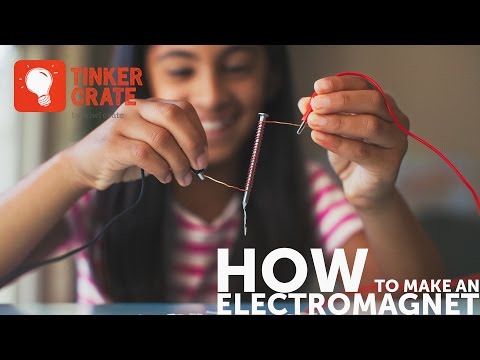
Unlike the magnets that are used on refrigerators, electromagnets are magnets that can be turned on and off depending on the flow of electricity. The electricity that flows through the wire allows the molecules in the nail to attract certain things. Give this experiment a try, and see how many paper clips you can pick up with your electromagnet!
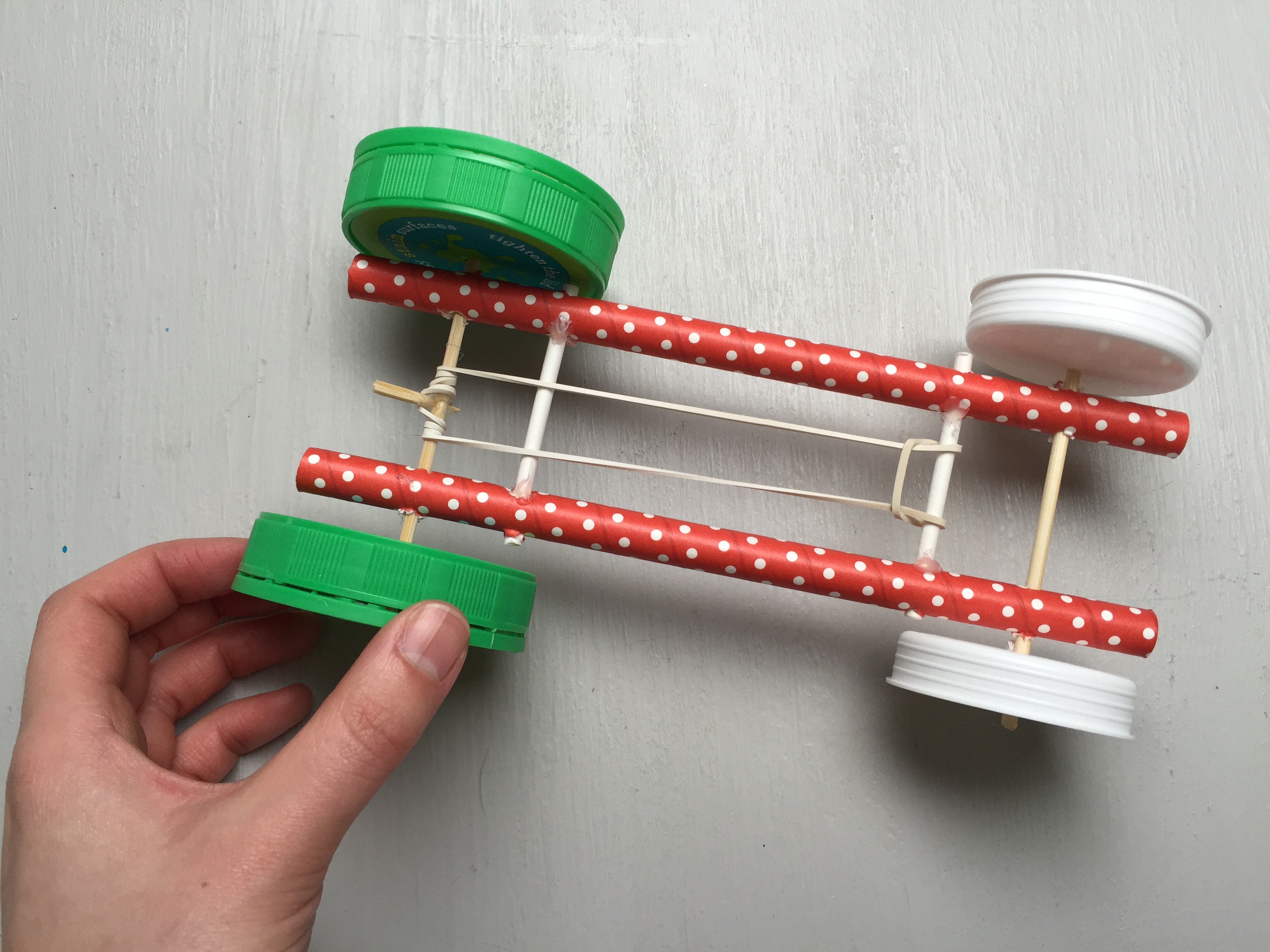
(Ages 5-16 )
Ready to get racing? Explore potential and kinetic energy with this rubber band-powered racer that kids (and grownups) can't get enough of!
Grow your young engineer's love for physics with a Marble Roller Coaster from the KiwiCo Store ! Become a thrill engineer and build twisty, turny tabletop roller coasters.
Get DIYs like this delivered to your inbox!
Get inspired.
Science Bob
- Experiments
- Science Fair Ideas
- Science Q&A
- Research Help
- Experiment Blog
Okay, this is the hardest part of the whole project…picking your topic. But here are some ideas to get you started. Even if you don’t like any, they may inspire you to come up with one of your own. Remember, check all project ideas with your teacher and parents, and don’t do any project that would hurt or scare people or animals. Good luck!
- Does music affect on animal behavior?
- Does the color of food or drinks affect whether or not we like them?
- Where are the most germs in your school? ( CLICK for more info. )
- Does music have an affect on plant growth?
- Which kind of food do dogs (or any animal) prefer best?
- Which paper towel brand is the strongest?
- What is the best way to keep an ice cube from melting?
- What level of salt works best to hatch brine shrimp?
- Can the food we eat affect our heart rate?
- How effective are child-proof containers and locks.
- Can background noise levels affect how well we concentrate?
- Does acid rain affect the growth of aquatic plants?
- What is the best way to keep cut flowers fresh the longest?
- Does the color of light used on plants affect how well they grow?
- What plant fertilizer works best?
- Does the color of a room affect human behavior?
- Do athletic students have better lung capacity?
- What brand of battery lasts the longest?
- Does the type of potting soil used in planting affect how fast the plant grows?
- What type of food allow mold to grow the fastest?
- Does having worms in soil help plants grow faster?
- Can plants grow in pots if they are sideways or upside down?
- Does the color of hair affect how much static electricity it can carry? (test with balloons)
- How much weight can the surface tension of water hold?
- Can some people really read someone else’s thoughts?
- Which soda decays fallen out teeth the most?
- What light brightness makes plants grow the best?
- Does the color of birdseed affect how much birds will eat it?
- Do natural or chemical fertilizers work best?
- Can mice learn? (you can pick any animal)
- Can people tell artificial smells from real ones?
- What brands of bubble gum produce the biggest bubbles?
- Does age affect human reaction times?
- What is the effect of salt on the boiling temperature of water?
- Does shoe design really affect an athlete’s jumping height?
- What type of grass seed grows the fastest?
- Can animals see in the dark better than humans?
Didn’t see one you like? Don’t worry…look over them again and see if they give you an idea for your own project that will work for you. Remember, find something that interests you, and have fun with it.
To download and print this list of ideas CLICK HERE .

- The scientific method
- science fair resources
- a little helpful advice
ADS (these ads support our free website)
Share this page.
Avoid These 5 Common Homeschooling Mistakes! 🚸

Your cart is currently empty!
12 Science Projects for 9th Graders (Ages 14 – 15)

Science Project 1: Homemade Barometer
Materials Needed:
- Rubber band
Procedure: Step 1: Cut the neck off the balloon and stretch the balloon over the mouth of the jar, securing it with a rubber band. Step 2: Tape one end of the straw to the middle of the balloon surface to act as an indicator. Step 3: Place the index card behind the jar and mark where the straw points. This barometer will respond to atmospheric pressure changes, moving the straw.
Science Project 2: Lemon Battery
- Copper coins or copper strips
- Zinc nails or galvanized nails
- Alligator clip wires
- LED light or small bulb
- Voltmeter (optional)
Procedure: Step 1: Insert a copper coin and a zinc nail into each lemon, making sure they don’t touch. Step 2: Connect lemons with alligator clips, attaching the copper of one lemon to the zinc of another. Step 3: Connect the free copper coin and zinc nail to the LED light. The chemical reaction should produce enough electricity to light it up.
Science Project 3: Water Purification System
- A clear plastic bottle (cut in half)
- Sand (coarse and fine)
- Coffee filter or cloth
- Activated charcoal (from pet store)
- Clean cup or container
- Muddy water (for testing)
Procedure: Step 1: Invert the top half of the bottle into the bottom half. Step 2: Layer coffee filter, activated charcoal, fine sand, coarse sand, and gravel into the inverted bottle top. Step 3: Pour muddy water through your filtration system into the clean container. Observe how sediments and impurities are removed.
Science Project 4: Crystal Growth Experiment
- Borax powder (found in laundry aisle)
- Pipe cleaners
- Pencil or stick
- Mason jar or any glass container
- Boiling water
- Spoon for stirring
Procedure: Step 1: Shape pipe cleaners into any form you like and attach them to a pencil. Rest pencil on top of jar so that pipe cleaner is submerged in borax solution. Step 2: Add boiling water to jar and then add borax until it stops dissolving (saturated solution). Step 3: Suspend pipe cleaner form in solution overnight. Check back later to find crystals formed around pipe cleaner shape.
Science Project 5: Magnetic Slime
- Liquid glue (like white school glue)
- Iron oxide powder
- Borax powder
- A magnet (neodymium preferably)
- Spoon or craft stick for stirring
Procedure: Step 1: In one bowl, mix 1/2 cup glue with 1/2 cup water. Step 2: Add 2 tablespoons of iron oxide powder to the glue mixture and stir until evenly mixed. Step 3: In a separate bowl, dissolve 1 teaspoon of borax into 1 cup of warm water. Step 4: Slowly add the borax solution to the glue mixture, stirring constantly until the slime forms. Step 5: Knead the slime with your hands until it reaches the desired consistency. Step 6: Use the magnet to observe how the slime responds to magnetic fields.
Science Project 6: Plant Transpiration Experiment
- A small plant with large leaves
- Clear plastic bag
- Rubber band or string
Procedure: Step 1: Water the plant and let it sit for an hour. Step 2: Cover one of the plant’s leaves with the clear plastic bag and secure it with the rubber band or string. Step 3: Place the plant in a sunny area for a couple of days. Step 4: Observe the inside of the bag for moisture, which is evidence of the process of transpiration.
Science Project 7: Make Your Own Volcano
- Baking soda
- Food coloring (red or orange for lava effect)
- Play dough or clay to build the volcano
- A small container (like a film canister) for the reaction
- Tray to contain the mess
Procedure: Step 1: Use play dough or clay to build a volcano around the small container. Leave an opening at the top for the eruption. Step 2: Add 2 to 3 tablespoons of baking soda, a few drops of food coloring, and about a teaspoon of dish soap in the small container. Step 3: Pour vinegar into the container and watch as your volcano erupts!
Science Project 8: Solar Oven
- A pizza box
- Aluminum foil
- Plastic wrap
- Black construction paper
- Tape or glue stick
- Stick or straw to prop open the lid
Procedure: Step 1: Cut a flap in the lid of the pizza box, leaving one side attached. Step 2: Line the bottom of the box and the underside of the flap with aluminum foil, securing it with tape or glue. Step 3: Place black construction paper inside the box to absorb heat. Step 4: Cover the opening made by the lid flap with plastic wrap, creating a window. Step 5: Insulate the box with rolled up newspaper along the edges. Step 6: Place food on a plate inside the box, prop the lid open with a stick or straw, and aim the reflective flap towards the sun to cook or heat.
Science Project 9: Homemade Spectroscope
- A cardboard tube (from a paper towel roll)
- Scissors or craft knife
- Duct tape or black paper tape
- A small slit cut on one end of the tube
Procedure: Step 1: Cut a clean edge of the CD to create a reflective surface without the label. Step 2: Tape or glue the CD piece inside the bottom of the cardboard tube at a 45-degree angle with the reflective side up. Step 3: On the opposite side of the tube, create a narrow slit for the light entrance. Step 4: Point the slit at different light sources and gaze through the open end of the tube to see different spectra.
Science Project 10: Electric Play Dough
- Vegetable oil
- Lemon juice or cream of tartar
- Food coloring (optional)
- Conductive and insulating play dough recipes
- Battery pack with wires
- Light emitting diodes (LEDs)
Procedure: Step 1: Make two types of play dough – one that is conductive (with salt and lemon juice) and one that is insulating (with sugar). Step 2: Mold the conductive dough into shapes and connect LED leads into it. Step 3: Use the battery pack to introduce electricity, and arrange the insulating dough to act as a barrier between conductive pieces. Step 4: Observe the flow of electricity and how the LEDs light up when they make contact with the conductive dough.
Science Project 11: Air Pressure Can Crusher
- Empty soda can
- Stove or hot plate
- Bowl of ice water
Procedure: Step 1: Add a small amount of water to the soda can. Step 2: Heat the can on the stove or hot plate until steam is coming out of the opening. Step 3: Use tongs to quickly flip the can upside down and submerge it into the bowl of ice water. Step 4: Observe the can as it rapidly crushes due to the change in air pressure inside the can.
Science Project 12: DIY Microscope
- Smartphone with a camera
- Laser pointer lens
- Small piece of clay or poster putty
- Paper clip or small bobby pin
Procedure: Step 1: Disassemble the laser pointer to retrieve the small lens. Step 2: Use the clay or putty to attach the lens over the camera lens of the smartphone. Step 3: Bend a paper clip into a stand to hold slides (or use a bobby pin). Step 4: Place a slide with the object you want to magnify onto the stand. Adjust the distance between the slide and camera until the object comes into focus. Step 5: Take pictures or videos using the phone and observe the magnified details of the object on the slide.
There you have it, twelve engaging science projects covering various principles and disciplines, suitable for a 9th-grade level. Each addresses different scientific concepts and allows for hands-on exploration and learning.
View Our Grade 9 Lesson Plans:
- Maths Lesson Plan for Grade 9
- Science Lesson Plan for Grade 9
- Reading Comprehension Lesson Plan for Grade 9
- Vocabulary Lesson Plan for Grade 9

Who’s Behind Phoenix Home Ed?
Leave a reply cancel reply.
Your email address will not be published. Required fields are marked *
Save my name, email, and website in this browser for the next time I comment.
Notify me of follow-up comments by email.
Notify me of new posts by email.
Get the Reddit app
/r/ScienceTeachers is a place for science educators to collaborate on and contribute tips, ideas, labs, and curricula. We seek to encourage the sharing of interesting studies, experiments, videos and articles that will interest students of all ages and promote science and critical thinking in their lives.
Year 9 Research project ideas.
I’m looking for an experiment around electricity or sound (subjects completed by the students this year) that I can use for a research project. This year we are focussing on discussion which is why we have decided against ohms law as it doesn’t allow for discussion of Accuracy, Reliability and validity.
Any suggestions or ideas would be appreciated.
By continuing, you agree to our User Agreement and acknowledge that you understand the Privacy Policy .
Enter the 6-digit code from your authenticator app
You’ve set up two-factor authentication for this account.
Enter a 6-digit backup code
Create your username and password.
Reddit is anonymous, so your username is what you’ll go by here. Choose wisely—because once you get a name, you can’t change it.
Reset your password
Enter your email address or username and we’ll send you a link to reset your password
Check your inbox
An email with a link to reset your password was sent to the email address associated with your account
Choose a Reddit account to continue
- Preschool Mega Bundle
- Sight Words Mega Bundle
- Alphabet Bundle
- Tracing Bundle
- Shapes Bundle
- I Spy Bundle
- Do-A-Dot Bundle
- Colors Bundle
- Matching Bundle
- Counting Bundle
- Word Walls Bundle
- Q-Tip Painting Bundle
- Kindergarten
- Language Arts
- Social Studies
- St. Patrick's Day
- Thanksgiving
- Valentine's Day
- Sight Words
- Letter Recognition
- Number Recognition
- Pattern Recognition
- Subtraction
- Bulletin Board Accents
- Bulletin Board Borders
- Bulletin Board Letters
- Bulletin Board Paper
- Bulletin Board Sets
- Bulletin Board Storage
- Posters & Charts
- Chalkboard Toppers
- Two-Sided Decorations
- Window Clings
- Magnetic Accents
- Magnetic Borders
- Magnetic Letters
- Magnetic Labels & Name Tags
- Magnetic Sets
- Bulletin Board Ideas
- Storage Bins, Boxes & More
- Chair Pockets
- Library Pockets
- Activities, Cards & Mats
- Flash Cards
- Pocket Charts
- Chart Paper & Stands
- Educational Posters
- Certificates & Diplomas
- Incentive & Reward Charts
- Stamps & Stamp Pads
- Whiteboard Supplies
- Chalkboard Supplies
- Hall Passes
- Name Plates
- Children's Books
- Plan & Record Books
- Resource & Activity Books
- Construction Paper
- Craft Paper
- Drawing Paper
- Colored Pencils
- Craft Sticks
- Glue & Adhesives
- Wiggle Eyes
- AccuCut Die Cutting
- Ellison Die Cutting
- Sizzix Die Cutting
- Die Cutting Machines
- Dies & Die Sets
- Starter Sets
- Dough & Clay Tools
- Modeling Materials
- Paint Brushes
- Aprons & Smocks
- Post-It & Sticky Notes
- Clips & Fasteners
- Staplers & Staples
- Tape & Dispensers
- Rulers & Measuring
- Binders & Accessories
- Desk Organizers & Accessories
- Filing & Folders
- Labels & Labeling
- Printer Paper
- Filler Paper
- Index Cards
- Pencils & Accessories
- Highlighters
- Correction Fluid & Tape
- Pretend Play Sets
- Pretend Food
- Sports Accessories
- Sports Sets
- Tricycles & Ride-Ons
- Bulletin Boards
- Chalkboards
- Dry Erase Boards
- Alphabet Rugs
- Carpet Squares & Circles
- Circle Time & Seating Rugs
- Daycare Rugs
- Preschool Rugs
- Physical Education
- Trend Enterprises
- Carpets for Kids
- Carson Dellosa
- Teacher Created Resources
- Foundations
- Creative Teaching Press
- McDonald Publishing
- Joy Carpets
- Learning Resources
- Ashley Productions
- Scholastic Teaching Resources
- North Star Teacher Resources
- Barker Creek
- Hygloss Products
- All Popular Brands
- Shop by Theme
- Your Account
- Science Fair Projects
- Grade 3rd Grade 4th Grade 5th Grade 6th Grade 7th Grade 8th Grade 9th Grade 10th Grade
- Topic Aerodynamics Behavioral & Social Science Chemistry Electricity Energy Food Geology Human Biology Life Science Memory Microbiology Physical Science Physiology Plants Psychology Sports Zoology
- Supplies Experiment Kits Project & Display Boards
- All Science Fair Projects
9th Grade Science Fair Projects
Narrow your search.
- Middle School
- Behavioral Social Science
- Earth Environmental Science
- Electricity
- Engineering
- Food Science
- Human Biology
- Life Science
- Microbiology
- Physical Science
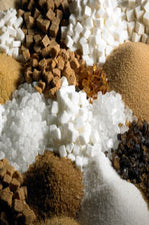
- Are All Sugars The Same?
Ever wonder if table sugar is the same as sugars found in honey, fruits, etc...

- Keeping Drinks Hot
Whether you're a coffee, tea, or cocoa drinker, if you plan to enjoy a hot be...
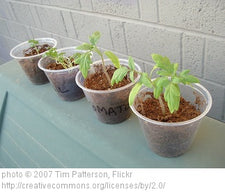
- Recycled Water - Does It Effect Plant Growth?
For students interested in botany, ecology, and recycling, this science fair ...
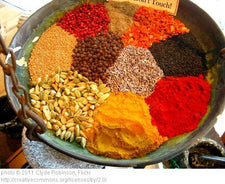
Exploring the Preservative Qualities of Various...
For middle school students interested in microbiology, this is sure to be a ...
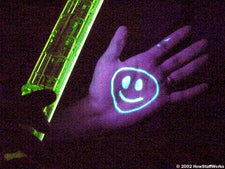
- All That Glows - Exploring Fluorescence
Photo Source: howstuffworks.com Black lights are not only neat, they can ac...
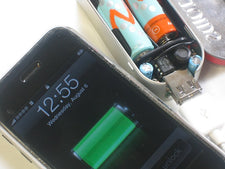
- Keeping Your Gadgets Going... with Solar Power!
Photo Source: adafruit.com In this age of technology, it seems as if everyo...

- Harnessing the Sun's Rays for Cooking
Solar energy is a low-cost technology that can be used to heat homes, power ...
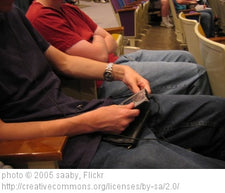
- Does Music Help You Study?
With the ability to access your favorite music almost everywhere, have you ev...
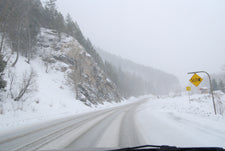
What Makes Ice Melt Fastest?
Photo © 2008 Matt Seppings, Flickr The Department of Transportation (DOT) i...

- Do You Know About the Germs You're Carrying?
While many students have explored school bathrooms, doors, and other surfaces...
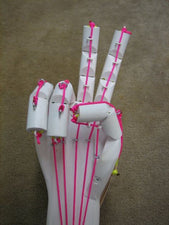
Engineering + Physiology - Building an Articula...
Photo Source: www.instructables.com | rgraylint For students interested in...

Gender & The Stroop Effect
Photo Source: Eric H. Chudler, University of Washington Check out the pictu...

Subliminal Messaging: Is It Effective?
Photo Source: buysubliminal.com There is a lot of controversy surrounding s...

Grafting Plants with Bubble Gum!
Photo Source: www.fruitsinfo.com Grafting is a technique that botanists hav...

Music & Concentration
Photo © 2009 Karrie Nodalo, Flickr While listening to music as you complete...

Dirty Mouth: Effect of Mouthwash on Bacteria
Photo © 2009 Flickr, Inha Leex Hale Mouthwash is commonly used to rid the m...
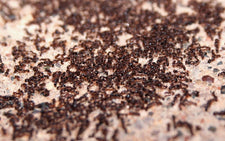
Artificial Sweeteners Versus Cane Sugar - Which...
Photo © 2008 Steven Depolo, Flickr To test whether ants prefer natural cane...

How Does Tee Height Affect Driving Distance?
Any golfers out there? For those students interested in physics and sports, ...

Physical Activity & Academic Performance: I...
Photo © 2006 Alberto G., Flickr Not only is exercise important for keeping ...

Can Tide GAIN All the Prize?
Photo © 2009 Flickr, Pixel Drip High school student, Dao Quan Lin, wondered...

Turn Up The Heat: Comparing the Flammability of...
Ever wonder about the fire rating of housing materials? After a wildfire near...

Cell Phones & Driving
Photo © 2009 Lisa Padilla, Flickr Talking, texting, gaming, catching up wit...
Top 10 Best 9th Grade Science Fair Projects [Updated 2020]
- Exploring the Preservative Qualities of Various Spices
- Engineering + Physiology - Building an Articulated Hand
- STEM Ambassadors
- School trusts
- ITE and governors
- Invest in schools
- Student programmes
- Benefits and impact
- Our supporters
- Advertising and sponsorship
- Become a STEM Ambassador
- Request a STEM Ambassador
- Employer information
- Training and support
- STEM Ambassadors Partners
- Working with community groups
- Search icon
- Join the STEM Community
Nuffield Science Year 9
Year Nine of Nuffield Science for Key Stage Three was written to provide a clear transition into the 14-16 curriculum. Two teaching sequences were devised for Year Nine, either as an integrated course or as a co-ordinated course divided into biology, chemistry and physics.
Two basic principles underpinned the planning of the course: * It was to be transitional bridging the gap between the process-oriented, exploratory work of earlier years and the more conceptualised approach to science to come later. *It was to be activity-based implying not just that there should be plenty of practical activities but also that learning should be a student-centered, active process.
Topic A Materials in the world about us
Topic B Living earth
Topic C Energy
Topic D Chemical patterns (chemical change, elements and compounds)
Topic E Weather and landscape
Topic F What is life?
Topic G Communication (communications and astronomy)
Topic H Rocks, minerals and metals
Topic I Control (magnetism, electricity and electronics)
The resources
The activity sheets form the core of the course. They are supported (for teachers and technicians) by the teachers' guide and, for students, by the pupils' book. Sometimes the pupils' book presents a context from which the activities arise: sometimes it provides applications of science studied in the activities. There are many questions in both the activity sheets and the pupils' book. The suggested activities are varied. They include practical investigations, teacher demonstrations, data analysis, designing and making, guided reading, purposeful writing, discussion and debate as well as puzzles and quizzes.
Show health and safety information
Please be aware that resources have been published on the website in the form that they were originally supplied. This means that procedures reflect general practice and standards applicable at the time resources were produced and cannot be assumed to be acceptable today. Website users are fully responsible for ensuring that any activity, including practical work, which they carry out is in accordance with current regulations related to health and safety and that an appropriate risk assessment has been carried out.
Show downloads
| Subject(s) | Biology, Chemistry, Physics, Earth science, Science |
|---|---|
| Age | 11-14 |
| Published | 1990 - 1999 |
| Published by | |
| Collections | |
| Direct URL |
Share this resource
Did you like this resource, lists that tag this content, sound - waves, frequencies and hz , posted by aidan reece.

- Search forums
- Looking for HSC notes and resources? Check out our Notes & Resources page
- Secondary Education
- Years 9 & 10
Year 10 Science Research Project Ideas? (1 Viewer)
- Thread starter nununana
- Start date Feb 5, 2015
Any ideas for the science research project? What did you guys do for your science research project in year 10?
Active Member
I measured how much light refracts when passed through different liquids using a laser as my light source, then using snell's law I was able to calculate the refractive index of each liquid.
I did how the different types of willows in cricket bat respond (ping, basically how far the ball comes off the bat) differently. Just do whatever you are passionate about
The pessimistic optimist.
Will the distance a paper plane be impacted by the amount of drag it experiences?
I did the easiest thing ever: time the time it takes to melt an ice cube in different household liquids, e.g. vinegar, milk, etc.
~~~~ Miss Cricket ~~~~
piethepker said: I did how the different types of willows in cricket bat respond (ping, basically how far the ball comes off the bat) differently. Just do whatever you are passionate about Click to expand...
Haha always been a cricket nut.
I did how effective different laundry washing powders and liquids were in washing coffee / tea off a piece of fabric or cotton. Can't remember the details.
piethepker said: Haha always been a cricket nut. Click to expand...
RivalryofTroll
Sleep deprived entity, fancypenguin.
I measured whether water temp affects the surface tension of water and whether salt affects it as well. It's better do do something easier as they're marking you on your write up rather than the difficulty of the experiment
WrittenLoveLetters
I think I did something really simple concerning water preservation of apple slices and then testing it with different amounts of salt. It sounds really stupid, the experiment was easy (and took a lot of time actually) but I put a lot of scientific research into my discussion and explanations. Plus my experiment was unique, no one did it in the grade, so it wasn't seen as simple, I guess. I don't even know, I got full marks for the SRP, if I find it, I can attach it or something.
Silly Sausage
Well-known member.
Couldn't be bothered to do anything fancy, grew mould on bread. Measured temp and humidity with a hygrometer, ended up growing penicillin (or something similar) that killed off the surrounding mould.
I tested how different types of colours had different visibility levels in complete darkness, and how the eyes adjusted to the darkness.
the_matrix said: I tested how different types of colours had different visibility levels in complete darkness, and how the eyes adjusted to the darkness. Click to expand...
alright alright ~90% darkness? maybe. But do keep in mind that different colours have different luminosity levels and the type of ink affected it too. i.e. laser printer vs inkjet, laser wins! (due to higher luminosity - hard to explain and I'm not going into IST terms like my teacher did..)
ChasingMedForLife
Make a particle accelerator
turntaker said: Make a particle accelerator Click to expand...
Crisium said: + 1 I did this and it worked out great Click to expand...
Users Who Are Viewing This Thread (Users: 0, Guests: 1)
- Work & Careers
- Life & Arts
US Elections 2024
Delays hit 40% of biden’s major ira manufacturing projects, continue reading and get the indispensable us election countdown newsletter for free..
Want a deeper look?

.css-tw73a9{height:2px;min-width:50px;background-image:repeating-linear-gradient( to right, black, black 2px, transparent 2px, transparent 4px );}.css-tw73a9+.css-tw73a9{margin-top:2px;}@media (min-width: 740px){.css-tw73a9{margin:0;}} We've got you covered

US Election Countdown newsletter

US Presidential Election 2024 hub

Democracy 2024

Expert Opinion & Analysis
Explore more offers., standard digital.
- FT Digital Edition
Premium Digital
Print + premium digital, ft professional, weekend print + standard digital, weekend print + premium digital.
The new FT Digital Edition: today’s FT, cover to cover on any device. This subscription does not include access to ft.com or the FT App.
- Global news & analysis
- Expert opinion
- Special features
- Exclusive FT analysis
- FT App on Android & iOS
- FT Edit app
- FirstFT: the day's biggest stories
- 20+ curated newsletters
- Follow topics & set alerts with myFT
- FT Videos & Podcasts
- 20 monthly gift articles to share
- Lex: FT's flagship investment column
- 15+ Premium newsletters by leading experts
- FT Digital Edition: our digitised print edition
- Weekday Print Edition
- FirstFT newsletter
- Videos & Podcasts
- 10 gift articles per month
- Premium newsletters
- 10 additional gift articles per month
- FT Weekend Print delivery
- Everything in Standard Digital
- Everything in Premium Digital
Essential digital access to quality FT journalism on any device. Pay a year upfront and save 20%.
- 10 monthly gift articles to share
- Everything in Print
- Make and share highlights
- FT Workspace
- Markets data widget
- Subscription Manager
- Workflow integrations
- Occasional readers go free
- Volume discount
Complete digital access to quality FT journalism with expert analysis from industry leaders. Pay a year upfront and save 20%.
Terms & Conditions apply

IMAGES
COMMENTS
Ninth Grade Science Projects. (595 results) Science Buddies' ninth grade science projects are the perfect way for ninth grade students to have fun exploring science, technology, engineering, and math (STEM). Our ninth grade projects are written and tested by scientists and are specifically created for use by students in the ninth grade.
This is the perfect time to start experimenting with creative, engaging, and educational science projects. Here are 18 mind-blowing ideas for your next 9th grade science project: 1. Build a Crystal Radio: Understand how a simple radio receiver works by constructing your own crystal radio set. 2.
24. Heat Sensitive Color Changing Slime. Let your students get messy with this science project idea that will teach them how to create heat sensitive color changing slime. All it requires is white school glue, water, thermochromic pigment, liquid starch, and different food colorings for them to get creative with. 25.
Evaluating Benfords Law | Education.com - Grades 9-12, In this project, students investigate the applicability of Benford's Law to many sets of everyday data, such as lists of country populations, utility bills or the distance of various stars from earth. Patterns in J.S. Bach | Education.com - Grades 9-12, Determine the mathematical ...
19. Rubber Band Racer. Rubber Band Racer is an interesting 9th-grade science project idea that lets the students know about the relationship between the mass, speed, and tension of a rubber band. This will help them to understand how their cars work. They will create a roller coaster with rubber bands instead of rails.
Ninth Grade STEM Activities for Kids. (83 results) Science Buddies' ninth grade science projects are the perfect way for ninth grade students to have fun exploring science, technology, engineering, and math (STEM). Our ninth grade projects are written and tested by scientists and are specifically created for use by students in the ninth grade.
26. Film Canister Explosions. Prepare for a blast of excitement and chemistry with the high school science experiment - "Film Canister Explosions!". This project teaches students about chemical reactions and pressure build-up. Learn more: Steve Spangler.
Our ninth grade projects are written and tested by scientists and are specifically created for use by students in the ninth grade. Students can choose to follow the science experiment as written or put their own spin on the project. For a personalized list of science projects, ninth graders can use the Science Buddies Topic Selection Wizard.
Remove the air in a DIY vacuum chamber. Instructables. Difficulty: Medium / Materials: Medium. You can use a vacuum chamber to do lots of cool high school science fair projects, but a ready-made one can be expensive. Try this project to make your own with basic supplies. Learn more: Vacuum Chamber at Instructables.
Also, remember that accurately citing sources is critical to any successful project. Always cite any references used in developing your experiment. 9th Grade Science Fair Project Ideas. Teeth whiteners: Find the shade of white that matches your teeth. Brush your teeth using a teeth-whitening toothpaste or gum.
In this project, we will perform and systematic review and meta-analysis of fasting or diet-induced autophagy and its benefits on the body. You will gain skills in 1) searching and reviewing primary literature, 2) computational skills for performing data analysis (R language), and 3) writing your scientific findings.
These science fair projects for 9th grade are perfect for older kids to explore advanced science concepts and tinker with some more exciting materials. Pressure Bottle Rocket. (Ages 9-16) Water squirters work by pressurizing reservoirs of water with air. As you pump the squirter, it gradually adds air to the reservoir, increasing the pressure.
Remember, find something that interests you, and have fun with it. To download and print this list of ideas CLICK HERE. Here's a list of over 30 Science Fair ideas to get you started. Then download science experiments, and watch experiment videos to inspire your project.
Science Project 1: Homemade Barometer. Materials Needed: Step 1: Cut the neck off the balloon and stretch the balloon over the mouth of the jar, securing it with a rubber band. Step 2: Tape one end of the straw to the middle of the balloon surface to act as an indicator. Step 3: Place the index card behind the jar and mark where the straw ...
/r/ScienceTeachers is a place for science educators to collaborate on and contribute tips, ideas, labs, and curricula. We seek to encourage the sharing of interesting studies, experiments, videos and articles that will interest students of all ages and promote science and critical thinking in their lives. ... Year 9 Research project ideas. I ...
Browse Science Projects. Over 1,200 free science projects for K-12. Browse by subject, grade level, or try our Topic Selection Wizard to find your winning science project. With science projects in 32 different areas of science from astronomy to zoology, we've got something for everyone! Let us help you find a science project that fits your ...
Read More. 1849 reviews. Verified by. Your #1 source for 9th grade science fair projects and experiments. Whether you're looking for some of the best and winning science fair ideas or some that are fun, simple, or easy, we've got you've covered!
PICNIC POINT HIGH SCHOOL. Year 9 Science. Independent Research Project. and Proposal Form (Section B)INTRODUCTIONThis project is your opportunity to inves. igate something that is of interest to YOU! One of the distinguishing features of young people who are well prepared for their 21st century life is the ability to find problems to solve and ...
Year Nine of Nuffield Science for Key Stage Three was written to provide a clear transition into the 14-16 curriculum. Two teaching sequences were devised for Year Nine, either as an integrated course or as a co-ordinated course divided into biology, chemistry and physics. Principles Two basic principles underpinned the planning of the course: * It was to be transitional bridging the gap ...
2016. Feb 6, 2015. #12. I think I did something really simple concerning water preservation of apple slices and then testing it with different amounts of salt. It sounds really stupid, the experiment was easy (and took a lot of time actually) but I put a lot of scientific research into my discussion and explanations.
Ninth Grade, Space Exploration Science Projects. (23 results) Space exploration is an exciting and wide-ranging area. Getting into space (and back down) is hard, involving rockets and launch vehicles, satellites, spacecraft, re-entry systems, landers and rovers, robots, and orbital mechanics, not to mention hypothetical technologies like space ...
You can also check out our free courses offered by upGrad in Management, Data Science, Machine Learning, Digital Marketing, and Technology.. One-Of-Its-Kind Program That Creates Skilled Software Developers. Apply Now! Check Out upGrad's Full Stack Development Bootcamp. By working on live software development minor project topics, you can spice up your resume and position yourself as an ideal ...
Project 2025 is backed by a $22m (£17m) budget and includes strategies for implementing policies immediately after the presidential inauguration in January 2025.
Below is a list of the 1166 science fair project ideas on our site. To help you find a topic that can hold your interest, ... Area of Science: Project Idea Title (Click on the link for details on each project.) 3D Printing: 3D Print a Drone Frame: 3D Printing: Design and 3D-Print Your Own Robot!
The total value of the 114 large projects tracked by the FT was $227.9bn. Companies said deteriorating market conditions, slowing demand and lack of policy certainty in a high-stakes election year ...
It doesn't have to cost a lot to make something one-of-a-kind and special to give to Dad, a father figure, or another special person. Many of the ideas highlighted below use materials you can probably find around the house. Try one of these 10 science and engineering activities for a unique "I made this" gift for Father's Day: 1. Mini Trebuchet